




OBSERVER DAYTON THE Published by the Jewish Federation of Greater Dayton July 2024 Sivan/Tammuz 5784 Vol. 28, No. 11 David Moss designs Grace After Meals in comic book form p. 22 The Miami Valley’s Jewish Monthly • daytonjewishobserver.org Book documents allyship of Irish and Jewish Americans p. 21 Joan Nathan's Raspberry-Walnut Rugelach 19 Former Daytonians' reunion in Israel 6 Kevin Pillar's latecareer resurgence 15 Jewish Federation of Greater Dayton 525 Versailles Drive Dayton, OH 45459 Address Service Requested NON-PROFIT ORGANIZATION U.S. POSTAGE P A D DAYTON, OHIO PERMIT NO. 59
'I found home'
Marshall Weiss
Sarah Fox Klinger
Beth Abraham Synagogue Cantor Andrea Raizen retires
Miriam & Rabbi Samuel Fox
L.A.
Gabriela Herman
Angel Kevin Pillar
John Cordes /Icon Sportswire via Getty Images
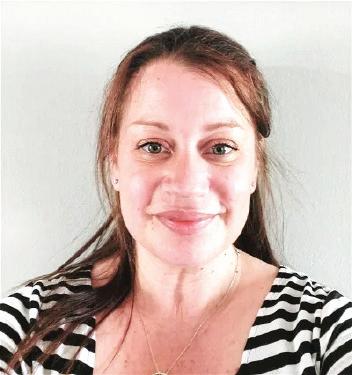







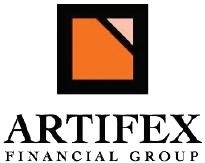



The Jewish Federation of Greater Dayton and the Jewish Foundation of Dayton offer each Jewish student in the Miami Valley from kindergarten through 12th grade a $500 annual subsidy toward Jewish programs locally or anywhere in the world. The Seeds: Jewish Youth Experience subsidy may be used for religious school, day school, day camp, overnight camp, youth and teen programs and trips, and may be used for multiple programs. Applications are not needbased. They are processed on the 15th of each month. For details, contact Alisa Thomas, athomas@jfgd.net.
PAGE 2 THE DAYTON JEWISH OBSERVER • JULY 2024 DAYTON Trusted - Respected - Recommended Jill Jackson Realtor® 937.245.4302 jilljacksonsells@gmail.com www.JillJacksonSells.com 1490 N. Fairfield Rd., Suite C Contact Patty Caruso at plhc69@gmail.com to advertise in The Observer. Find out how we can help you live the life you want. CONTACT US TO LEARN MORE Doug Kinsey, CFP®, CIMA® Managing Partner, Oakwood Office artifexfinancial.com 855-752-6644 doug.kinsey@artifexfinancial.com 2305 Far Hills Avenue, Suite 206 | Oakwood, OH | 45419 Artifex Financial Group has the knowledge and resources to make a real difference for you and your family. THEFLOWERSHOPPE.COM 937-224-7673 DAYTON OH 45419 2977 FAR HILLS AVE Corner of Far Hills & Dorothy Lane
Temple Israel
Tina,
and
take in the kids' area at Temple Israel's Jewish Cultural Festival, June 9 on the congregation's campus.
Rabbi
Dani,
Ezra Sobo
Jese Shell
Subsidies available for Jewish children & teen programs
Beth Jacob Congregation held its 4th Annual Jewish Women Inspiring Jewish Women luncheon May 19 featuring speakers (L to R): Martha Moody Jacobs, Dr. Judith E. Woll, Candace R. Kwiatek, Lela Klein, Liz Muler Zuker, and Gayle Pavlofsky.
'I found home'
As Beth Abraham's Cantor Andrea Raizen prepares to retire, she looks back on 17 years in Dayton
By Marshall Weiss, The Observer
Cantor Andrea Raizen's retirement from Beth Abraham Synagogue at the end of July marks the first time in a generation that no Dayton area Jewish congregation will employ an invested cantor. And due to financial constraints, Beth Abraham plans to only employ one full-time clergy member — its rabbi — moving forward. Since her arrival in 2007 at Dayton's only Conservative Jewish congregation, the cantor — who grew up in Denver — has also served as its director of education and programming.
Beth Abraham will honor Raizen with the title of cantor emerita, a special event July 21, and the establishment of an endowment fund for Jewish education in her name.
She tells The Observer she'll be available to tutor bar and bat mitzvah students with the synagogue after she retires. This interview has been edited for length and clarity.
I've noticed that the one constant over the 17 years you’ve been here has been change. It all began with moving into this building in Oakwood from Salem Avenue. I've worked with four rabbis here.
The length of time you’ve been here, is that an unusual span of time for clergy these days with a congregation?
These days. I noticed that amongst my colleagues, when you look at the placement lists from Cantors Assembly, they’re staying three and five years and moving on. And I think, in some cases, with rabbis too. I think it’s the same
Beth Abraham Synagogue will honor Cantor Andrea Raizen on her retirement with its Raizen Our Voices celebration, 2 p.m., Sunday, July 21, 305 Sugar Camp Cir., Oakwood. $18 adults, free for children. RSVP by July 8 to 937-293-9520 or bas@bethabrahamdayton.org.

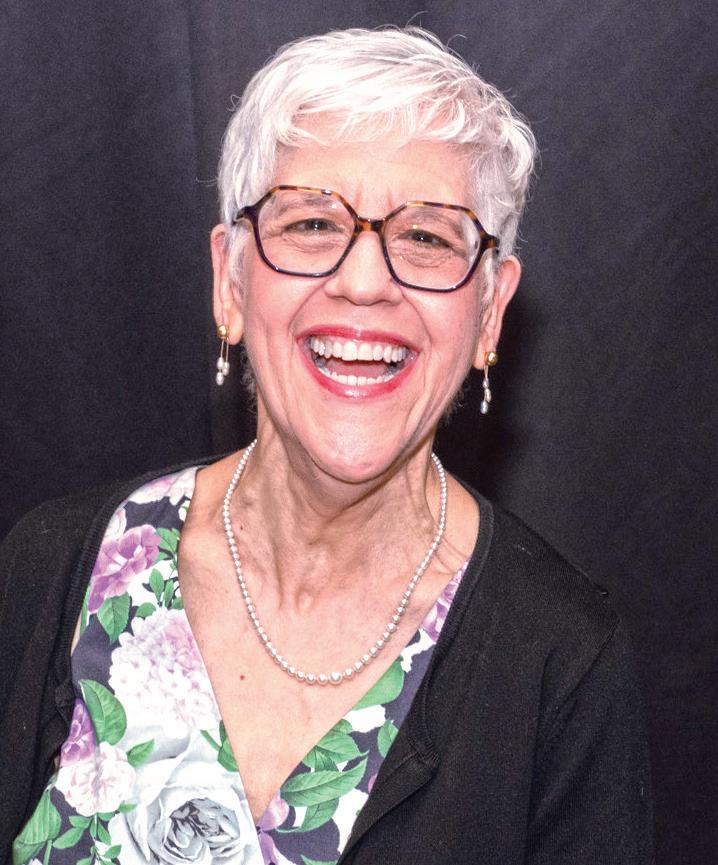
Cantor Andrea Raizen will continue living in Dayton. in other professions as well, where you don’t take that job and you’re there for 30 years. My last longest stint was seven years.
Why did you choose to stay here all these years?
I found home. And I think I knew it, actually, before I arrived. Because it was the first time that I made the decision that I was going to buy a house before I started.
When I was offered the position, I said I think this is where I’m going to finish up my career, and I want to make an investment in the community as well, and I had never bought a home in my life.
I knew it would make me have to power through the tougher times. Because I knew that about myself, that if I ran into things that were frustrating and I didn’t have that investment in the community, it was easy to say, OK, I’m going.
But I knew from the first phone interview.
There were several people on the other end. Everything just felt right. I hung up from that call, I called my mother and said, "I just had the best Continued on Page Four
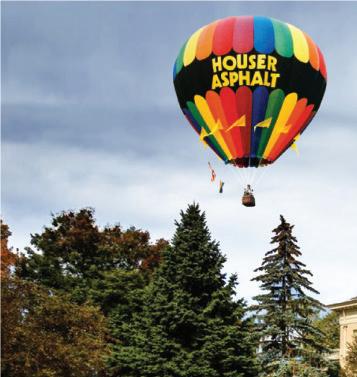
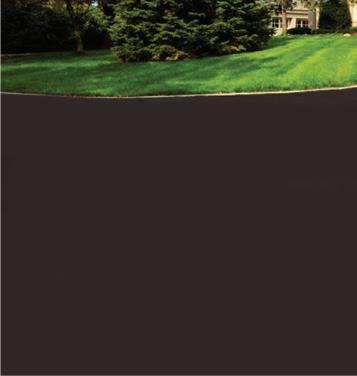






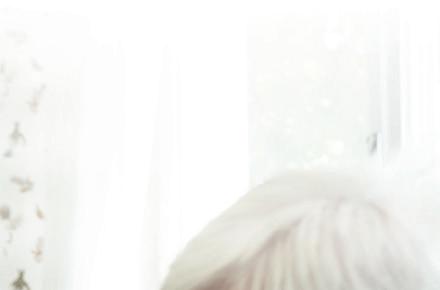






Love those dog days of summer .
























It's kind of obvious but still mindblowing to contemplate that actions we take now reverberate for generations.
The story in this Observer about a reunion of former Daytonians who live in Israel (Page Six) started me down this Back to the Future path.
Choices these individuals, couples, and whole families made 30, 40, 50 years ago have changed the trajectory of the Jewish people.
And years before, it was choices their parents and leaders of our Jewish organizations made that nurtured them to engage with — and even love — Judaism and Israel.
It's not easy to tell if we're living in a golden age until it's behind us and we look back. Even then, it's not so easy.
This is a quiet time on the calendar but not for the professionals and layleaders who create programs for our Jewish schools, congregations, and organizations. May they yield a bountiful, enduring harvest.



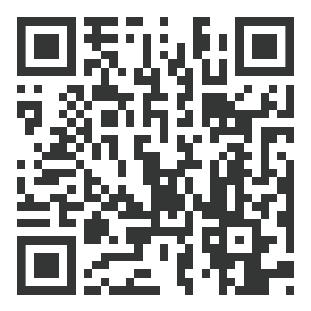



THE DAYTON JEWISH OBSERVER • JULY 2024 PAGE 3 From the editor’s desk
DAYTON Make the “Wright Choice” Houser Asphalt & Concrete 937-223-9207 • 800-319-1114 • www.houserasphalt.com Wright Brothers Home Asphalt Restoration Paving, Repairs, Sealcoating, Concrete, Walks, Patios, Drainage, Curbs, Approaches • Residential & Commercial Our 52nd Year Premier Retirement Living 590 Isaac Prugh Way - Kettering LincolnParkSeniors.com follow us: learn more: Now leasing 1 & 2 bedroom apartments. Please call Jonathan at 937-298-0594 to schedule your personal tour. QUESTIONS ABOUT ESTATE PLANNING & PROTECTING YOUR ASSETS? Join us for a FREE lunch and learn Thursday, July 25 • 11:30 a.m. - 1:30 p.m. Presented by: Learn about estate planning, VA benefits, Medicaid planning, and probate & guardianships. Plus free valet parking, tours, and prizes. RSVP to Dana Chesser at 937-913-8101.
Marshall Weiss
Mendy Fedotowsky
Contact Patty Caruso at plhc69@gmail.com to advertise in The Observer.
. .


Cantor Raizen
Continued from Page Three
job interview I’ve ever had. I think this is where I’m going to end up." And sure enough, all the pieces just fit together.
What are some of the innovations, new programs, new ideas you’ve brought to Beth Abraham?
Something I had been carrying with me from two congregations ago, they had what was called the Purim family reading, which was this booklet that had the story in it, but it worked in chants from the Megillah. My next congregation adopted it, and the same thing here. This year, we went back to that model again. During the pandemic, it was Kabba-Locked-In Shabbat. It wasn’t that other places weren’t doing that. But we kept that way past people being quarantined in their houses. Everybody knew it’s Kabba-LockedIn time.
We’ve had Kabba-Latke Shabbat. Havdalanukah. It’s always been a willingness to go above and beyond what they have hired me to do. I'm in the kitchen making Chinese dinner, making 100 egg rolls every year (in December). Shavuot’s my dinner to do. That’s my gift to the synagogue. The Torah reading corps is still really strong. Many of those are my students.
The Zoom minyan (Monday through Thursday evenings) is healthy, alive and kicking. If you ask the people on that screen if we went back to in-person, would you be here, they will tell you they will not come. They are there, and a few of the people on there are on because they did their 11 months (of mourning) and have stayed on for two more years after. They’re there all the time. We have out-of-towners on there. We have this international minyan. We do it hybrid every once in a while, when we have a board meeting, we go up and do it in there, but I bring my laptop. We still don’t do a full minyan when it’s just Zoom. We keep out Borchu. We don’t do Hatzi Kaddish. The exception is we will do Mourner’s Kaddish. I think that’s
been a comfort.
What parts of your job have you found the most rewarding? What brings you the most joy?
Being there with the bar and bat mitzvah kids when they finally go through that. Here, in a good year, we’ve had three or four kids become b’nai mitzvah. Sometimes we’d have a dry year and none at all.
Despite whatever the process was getting there, they always come through. I think that’s something I really do well. It was something I did even before I went to grad school to become an educator. Somebody pushed me: "You’ve got what it takes to teach bar and bat mitzvah to kids." I did that when I had a whole different professional life.
And I feel like a proud parent. I sit there and I kvell. There are times when it’s amazing to me, especially the kids who have had to struggle, that I’ve gotten over the hump. That gives me great, great pleasure.
The other thing that I’m really proud of, more of a community thing, is the Dayton Jewish Chorale. It was my idea a few years before the launch with me, Courtney Cummings (Temple Israel), and Cantor Jenna Greenberg (formerly a Beth Abraham congregant). It’s from when the Federation offered innovation grants.
After Jenna got to town, it came together. It still exists, even though it’s not in the same way that it was when we were a full-time choir. It was an incredible community-building group. They’re still together, and they don’t want to give it up. They sang at the Jewish Cultural Festival.
And the chorale created the community Selichot service that’s been going on. So we’re going back to Beth Jacob this year for the Selichot service. Rabbi Agar has said, "Absolutely we’ll host this."
What have been some of your biggest challenges over the years?
Covid truly was a turning point. Certainly, for educators and the quick pivot that had to be done. That we were able to do it not even knowing what the heck we were getting into.
We didn’t lose anybody from the

Editor and Publisher Marshall Weiss mweiss@jfgd.net 937-610-1555
Contributors
Rabbi Judy Chessin, Martin Gottlieb, Candace R. Kwiatek
Advertising Sales Executive Patty Caruso, plhc69@gmail.com
Administrative Assistant Samantha Daniel, sdaniel@jfgd.net 937-610-1555
Billing Sheila Myers, smyers@jfgd.net 937-610-1555
Proofreader
Rachel Haug Gilbert, Steven H. Solomon Observer Advisor Martin Gottlieb
Published by the Jewish Federation of Greater Dayton Mary Rita Weissman President Dan Sweeny President Elect Marni Flagel Secretary Neil Friedman Treasurer Ben Mazer VP Personnel Teddy Goldenberg VP Resource Dev. Dr. Heath Gilbert Immediate Past Pres. Cathy Gardner CEO
The Dayton Jewish Observer, Vol. 28, No. 11. The Dayton Jewish Observer is published monthly by the Jewish Federation of Greater Dayton, a nonprofit corporation, 525 Versailles Dr., Dayton, OH 45459.
Views expressed by columnists, in readers’ letters, and in opinion pieces do not necessarily reflect the opinion of staff or layleaders of The Dayton Jewish Observer or the Jewish Federation of Greater Dayton. Acceptance of advertising neither endorses advertisers nor guarantees kashrut.
The Dayton Jewish Observer Mission Statement To support, strengthen and champion the Dayton Jewish community by providing a forum and resource for Jewish community interests.
Goals
• To encourage affiliation, involvement and communication.
• To provide announcements, news, opinions and analysis of local, national and international activities and issues affecting Jews and the Jewish community.
• To build community across institutional, organizational and denominational lines.
• To advance causes important to the strength of our Jewish community including support of Federation agencies, its annual campaign, synagogue affiliation, Jewish education and participation in Jewish and general community affairs.
• To provide an historic record of Dayton Jewish life.

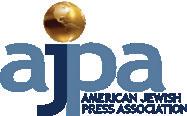


PAGE 4 THE DAYTON JEWISH OBSERVER • JULY 2024 OBSERVER THE
DAYTON
Please recycle this newspaper. The Dayton Jewish Observer daytonjewishobserver.org DAYTON Dayton Metro Library supports digital equity. Our 17 branches and website offer loanable laptops, public desktop computers, wireless hotspots, streaming services, adaptive technology, and more. Learn more at DaytonMetroLibrary.org or by calling the Ask Me Desk at 937.463.2665.
The Dayton Jewish Chorale under the direction of Cantor Andrea Raizen (R) at the 2nd Annual Interfaith Community Concert, March 10 at Beavercreek High School.
Contributed
school. And we then kept a whole school year after that. The 2021 school year, we kept entirely virtual. And we actually picked up students. I had students online that I never met until we finally came back in person.
I had to revamp: how long can a kid sit? We split them up, Sandy Sloane-Brenner still stayed on. But that was such a tiring year for me. And I thought, maybe this is telling me that it’s getting to be time. I don’t think that’s so unusual, because for a lot of teachers, that was about the time they were thinking, "I’m done."
And it was everything else that went with Covid through the synagogue. Because everything we did, we tried to keep going with the virtual. But we, I think, succeeded. We didn’t even lose a Purim shpiel. We had an online Purim shpiel, which I thought was one of the funniest ones we had ever put on. But it wasn’t just that. It was the whole Purim program with it. And I sat and watched it one day and saw how happy everyone was. They’re performing on screen.
We had a Chanukah thing online. I did a Sisterhood Sukkah program. I was sitting in my sukkah. It was Sunset in the Sukkah coming to you live from Cantor Raizen’s sukkah and had them doing scavenger hunts in their houses. So, it took every ounce of my creativity. And with the change in rabbis, more was put on me, and I was exhausted.
Do congregants approach the synagogue and Judaism differently than when you started here?
Yes and no. We were already on the older end of demographics when I got here. Now I look at the folks that come in and I’m as old or older than the "old people" are. The community that I interact the most with through services, that’s kind of the same, because
of the ages that they’re in. And they’re at a comfort level with the type of service that I came into and was happy to facilitate, being professionally trained as a cantor. I can do it in the proper nusach (musical prayer motif) and they appreciate this. We’ve just lost people like crazy. Going to the cemetery and seeing all your old friends. It hurts my heart so much how many dear friends I have lost. But it’s the reality.
It’s more about where American Judaism is right now. It’s been going on for a while. And I’ve said this for a long time: We are in that upheaval, that change that takes 10, 15 years to get through. Something different is going to come out on the other end. I have no idea what it’s going to be. I am not going to be a part of that. And it’s OK. I did my part. I was at the height of the family education programming wave.
What will you be up to now?
I’m staying in Dayton. What I want to do is nothing. I so desire to wake up and say, "I don’t have to do anything today." This has been the kind of job that I could never turn off. I just want to clear my head to begin with, and just be able to do whatever I want to do.
I’m also the kind of person, I know I need structure. And then I’m going to need to have routines. Some of it was about having put off not doing things that are in town because I’m so single-minded. I have never had a life-work balance.
I want to usher for the performing arts: the Philharmonic, which I rarely go to, the plays at the Schuster, the Victoria, Human Race, the PNC — that is huge on my list. I would like to sign up for the lifelong learning courses and take one class at a time. I want to get back to just reading any books. I get them at the main library. And I can volunteer at the library. I’ll be able to see family and take short trips.
Observer wins firstplace award from American Jewish Press Association
The American Jewish Press Association announced June 3 at its annual conference in Nashville that The Dayton Jewish Observer is the recipient of a first-place 2024 Simon Rockower Award for Excellence in Journalism.

An article by Editor and Publisher Marshall Weiss in September, Tipp City Board of Ed member regrets Nazi outburst, received the top honor for Excellence in News Reporting in the category of magazines and monthly newspapers.
A judge commented on the article that the "Reporter expertly utilized the news peg (BOE incident) as a microcosm for a broader examination of antisemitism in Ohio. (It) Also stood out for getting on-the-record interview/comments with principal parties in the BOE incident."
AJPA is the professional association of English language Jewish media in the United States and Canada.
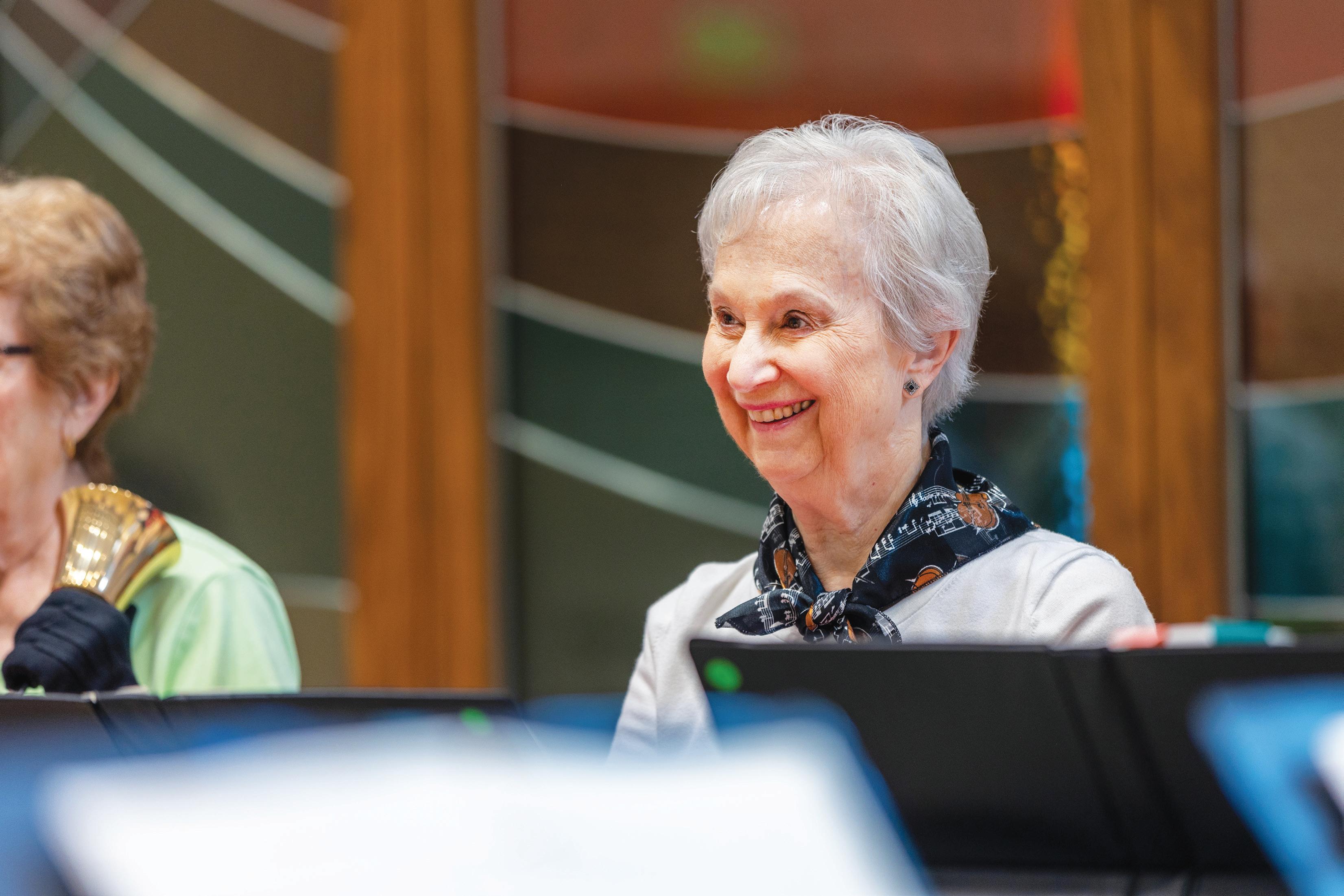
Harmonious Living At Bethany Village
Meet your neighbor Mary Arnett
Mary Arnett’s life at Bethany Village is a beautiful blend of music and friendship. With a background in the local philharmonic, her involvement in music has been a gateway to building meaningful friendships, which she holds dear. Mary’s story is a testament to the enriching power of music and community connection.

Scan the QR code to learn more about the neighborhood and see how Mary continues to inspire and bring joy to those around her at Bethany Village through her musical talents.
(937) 731-3900
BethanyLutheranVillage.org/neighbors
THE DAYTON JEWISH OBSERVER • JULY 2024 PAGE 5
DAYTON
Former Daytonians living in Israel gather for reunion
"It's great in Dayton but Israel is home," read a small hand-drawn banner taped to a refreshment table in the garden of Bracha and Yitzhak Zuriel's home in Jerusalem.
The Zuriels hosted a reunion for 40 former Daytonians — primarily baby boomers — on May 31. As far as Bracha knows, this is the first Dayton reunion in Israel since the 1980s.
"We made a WhatsApp group and people kept getting added. There are 44 people in that group," she says. "We included people who grew up in Dayton, people who made aliyah (immigrated to Israel) from Dayton, and also some of the people who were either shlichim (emissaries) or maybe because they were at the Air Force base and were involved in the community."
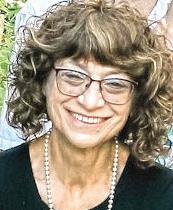
Bracha graduated from Fairview High School in 1973. She moved to Israel with her husband, Yitzhak, in 1976. They thought they'd stay for a year. A year became a lifetime.
For decades, she was the Jewish Federation of Greater Dayton's liaison in Israel and worked on programs through the Jewish Agency such as Project Renewal and Partnership2Gether.
She says the impetus for this reunion was the 100th birthday in May of Rabbi Samuel Fox, who served as Beth Jacob Congregation's rabbi from 1955 until his retirement in 1995. The rabbi and his wife, Miriam, split their time between Boca Raton, Fla. and the settlement of Efrat in the West Bank's Gush Etzion cluster.
"I got a call from Francie Zusman Sina, who had spoken to Judy Fox Katz (a daughter of Miriam and


Sam). And because Rabbi Fox was coming and he turned 100 — we all should look so good at 100, he's amazing — somebody said maybe we should have a Dayton reunion," Bracha says.
Rabbi Stan Peerless, who lived in Dayton from 1979 to 1990, emceed the reunion. He was vice principal and then principal of Hillel Academy, Dayton's Jewish day school, which in those days went through 12th grade.
Stan also served as rabbi of the now defunct Orthodox synagogue Shomrei Emunah. He and his family moved from Dayton to Jerusalem while he was a Jerusalem Fellow from 1990 to 1992. He, his wife, and all four of their daughters made aliyah

In his comments at the reunion, Stan emphasized what he describes as Dayton's once impressive aliyah rate and the Gem City's warm, close-knit connections among people.
"We have been away from Dayton for 33 years, yet some of our closest friends are still from our 11 years there," he says.
The aliyah rate, Stan believes, "reflects a Zionism that characterized a number of community institutions." In his role with Hillel Academy, he says he interacted with members of all the Dayton-area synagogues.
"One of the beautiful things about Hillel was that although it was at the time an Orthodox school, it serviced the entire commu-

PAGE 6 THE DAYTON JEWISH OBSERVER • JULY 2024
Photos: Sarah Fox Klinger
At the Dayton reunion in Jerusalem, May 31 (L to R): Francie Zusman Sina, Judy Fox Katz, Rabbi Yigal Yaari.
Lynn Mayerson Berger and Shlomo Berger
from Montreal in 1998.
Bracha Zuriel
Rabbi Stan Peerless
nity and we all worked together well," he says. "I have become familiar with many schools over my years in Jewish education, and very few can compare to Hillel at that time, both in this regard and vis-à-vis the quality of education."
Daytonian Dr. Keren Lawner-Gold and her husband, Jonny Gold, also live in Efrat, where she works from home as a family physician specializing in ADHD. Her mother and brother live in Jerusalem.

"I grew up in a very Zionist Israel-oriented home," the 1985 Hillel Academy graduate says. "I came to Hebrew University for my year abroad during college. From that time, I knew I wanted to make aliyah."
Keren made aliyah on her own after finishing her residency in family medicine at Lutheran General Hospital in Chicago.
"We each spoke about when we made aliyah and what we are doing now," she says of the reunion.
The former Daytonians played a trivia game drawn from the 2018 book Jewish Community of Dayton and shared updates on children and grandchildren, who continue to increase and multiply in Israel. Two of Keren and Jonny's four children are in the army.
'We try to carry on with life'
Even in the midst of the IsraelHamas war, Bracha, Stan, and Keren say the vibe at the reunion was joyful.

continue life, people sort of resume to the normal things they do. People were happy to see each other, and people met each other and remet each other at the reunion. It wasn't so obvious that people knew each other. A lot of people didn't. But the general warm feeling about Dayton was very prevalent.
"Look, there are simchas (celebrations), there are weddings, bar mitzvahs, there are happy things in our lives, and in spite of the terrible shock and sorrow about what happened," Bracha says.
'People were happy to see each other, and people met each other and remet each other.'
"We are all very affected by the war," Keren says. "We personally lost a neighbor who was in my son's class, Roi Wizer. He died heroically on Oct. 7 while saving the lives of many other soldiers who were on the base with him. There are many others from Efrat and surrounding communities who were killed.
"We try to carry on with life as much as possible because this is what Jews do. We have experienced many tragedies in our history, including the Holocaust. However, we rebuild. It is the Jewish way."
Bracha says Israelis are learning to navigate the good moments — even through the inescapable horrors of the Hamas massacre, kidnappings, and war.
"In the first month or two, everybody was just in shock. There was a feeling of, OK, we're not going to celebrate anything, we're not going to go out to eat. At some point, if you live in a place where you can
"Our children, our grandchildren are in the army, are fighting along with everybody. So we're just learning to embrace both of those things on a constant basis.
"At the beginning of the war, I have a son who's in the reserves and he served for the first four-and-a-half months as a medic in and out of Gaza. And he's going back in the army next month again. We have a son-in-law who is a career officer. And we have a daughter who lives in the Gaza envelope, so for the first two-and-a-half months, she was evacuated. And she came with six kids to the hotel. And her husband is in the army. She came with the six and she left with seven. By chance, when she went into labor, her husband was home. We were on duty, making lunches every day, making lunch for my daughter-in-law, who's home with three little kids, doing the laundry and taking care of the kids."
Stan says a unique element of Israeli resilience is that "we can go on with life without forgetting about the significance of what is going on around us."
"The olim (those who've made aliyah) who came together reflected on one aspect of Israeli society that is an important element of our strength: unity. The olim from Dayton come from varied backgrounds but are able to focus on and share common experiences and values. This was a special quality of the Dayton community, and perhaps an aspect of Israeli society that resonates with us."
Bracha was struck at how everyone at the reunion raved about the Dayton Jewish community.
"You grow up with something, you take it for granted, right? That's how it is. On Shabbat, I asked a bunch of friends who also grew up in various other places, 'Would you say this about your community? Would you get together with other people from your community and talk about what a great community it is?' And some of them looked at me and said, 'Eh, no.' It's something people should feel good about. Maybe you've really got something special there in Dayton — and hold onto it."
Future reunions a possibility
Stan says he hopes the reunion will become a recurring event. "The response was extremely positive."
"Everyone said, 'Oh, so are we going to make this an annual event?'" Bracha says. "I'm sure we didn't get to everyone. It's very possible we missed a lot of people. This morning, I woke up and thought of a few more names. Because it's very age dependent: how long you were in Dayton, how old you were, who did you know."
She also realizes there are people who made aliyah long before she did whom she doesn't know.

Moving forward, Keren has agreed to be the keeper of the names for future reunions. "We are just one link in the amazing history of the Jewish people," Keren says. "Israel is our home as promised in the Torah. I cannot imagine living anywhere else. Going through the war has strengthened our connection to the land and to each other as a community."
— Marshall Weiss
To add your name and contact information to the list for future reunions of Daytonians living in Israel, contact Dr. Keren Lawner-Gold at klawner@gmail.com.



THE DAYTON JEWISH OBSERVER • JULY 2024 PAGE 7 10 Wilmington Place The Family-Owned Independent Living | Assisted Living | Memory Care Call 937-253-1010 to schedule a complimentary lunch & tour! 10wilmingtonplace.com Difference
Miriam and Rabbi Samuel Fox
Dr. Keren Lawner-Gold
Vardit Zerem-Ullman and Prof. Yaacov Zerem

Businesses
Kettering Health Dayton
Louis S. Cantor, Rose Sorokin Cantor, Samuel L. Cantor and Lena Cantor Temple Israel and Jewish Federation of Greater Dayton, Inc. Fund
Fort Washington Investment Advisors
Boost Engagement • Groundskeeper Landscape Group • Jewish Federation of Greater Dayton
Economy Linen & Towel • Marker and Heller • Rieck Services
Brady Ware & Company • Dayton Optometric
A & A Safety • Ghostlight Bakery • Houser • Oldies 97.3 • Porta Kleen • Real Art
Gold Ambassadors and Ambassadors
Anonymous
Rabbi Karen Bodney-Halasz and Scott Halasz
Elaine and John Gaglione
Lynn and David Goldenberg
Debby and Bob Goldenberg
Terri and Michael Halasz
Joan Knoll
Fran Rickenbach
The Rose Family Foundation
Sara and Mitchell Faust
Heidi and John Freeman
Carol Graff
Julie and Alan Halpern
Sylvia and Ralph Heyman
Debbie and Dennis Lieberman
The Sobo Family
Ohio court bars Hebrew Union College from selling rare books amid financial woes
By Asaf Elia-Shalev, JTA
Ohio’s attorney general has obtained a court order prohibiting the financially strapped Hebrew Union College-Jewish Institute of Religion from selling off books from its Cincinnati library, which holds a significant collection of rare and precious items from throughout Jewish history.
Attorney General Dave Yost’s request for a temporary restraining order came in response to recent reporting in Cincy Jewfolk, a local outlet that published an in-depth article in April on the struggles of the educational institution, a seminary and university affiliated with Judaism’s Reform movement.
Cincy Jewfolk uncovered plans to sell rare books and reported that an administrator overseeing the library may have resigned after being pressured to carry out the plans.
The outlet also revealed that representatives of the auction house Sotheby’s had been hired to examine the library’s holdings.
The sale of library items would potentially undermine the intent of donors to the library in violation of Ohio law, Yost said in a press release.
“These sacred texts are invaluable artifacts — religious and cultural treasures,” Yost said. “Their sale would not only betray donor trust but also may violate legal restrictions placed on the gifts. We are committed to ensuring that these irreplaceable items remain available to the public and are cared for as their donors intended.”
Though Hebrew Union College, which also has campuses in New York, Los Angeles and Jerusalem, is phasing out its Cincinnati rabbinical school, it has said the campus would remain a hub for Jewish research. It has denied it has plans to sell rare books from the library’s collection.

no staff member has been asked to sell our books.”
The 14,000 rare texts held at the seminary’s Klau Library could be worth millions of dollars, according to the press release from Yost’s office.
Hebrew Union College has denied it has plans to sell rare books from the library's collection.
The collection is among the most significant of all Jewish libraries in the world and includes Jewish textual artifacts and historical works of philosophy, history and liturgy in more than a dozen languages. Librarians and administrators of Jewish educational institutions across the country are likely paying close attention to the situation because of concern for the collection and due to the possible implications of the involvement of legal authorities as Hebrew Union College contends with financial challenges that others also face.

“The rumors that we are planning to sell our rare books, and the subsequent legal and press attention, are based on incomplete and misleading information,” Andrew Rehfeld, the president of the institution, wrote in an email to the campus community after Yost’s announcement June 4, according to Cincy Jewfolk. “We have no plans to sell or ‘deaccession’ the collection and
At the Jewish Theological Seminary in New York, for example, administrators have sold real estate assets as well as library items in recent years amid declining enrollment.
In Los Angeles, American Jewish University sold its campus earlier this year and has yet to announce what will become of the university’s rare book collection.
A court hearing to evaluate the restraining order on Hebrew Union College has been set for July 12.
PAGE 8 THE DAYTON JEWISH OBSERVER • JULY 2024 with The Dayton Jewish Observer’s Marshall Weiss Weekly podcast The Jewish News Hour 130 Riverside Drive • Dayton, OH 45405 • www.tidayton.org
Thank you to
lead sponsors
making the Jewish Cultural Festival
success!
REGION
our
for
a
THE
Ohio Attorney General Dave Yost
Bill Clark/CQ-Roll Call, Inc via Getty Images
Search for The Dayton Jewish Observer in Spotify podcasts & subscribe
THE NATION
Mo. judge rejects interfaith suit, including rabbis, that challenged abortion ban
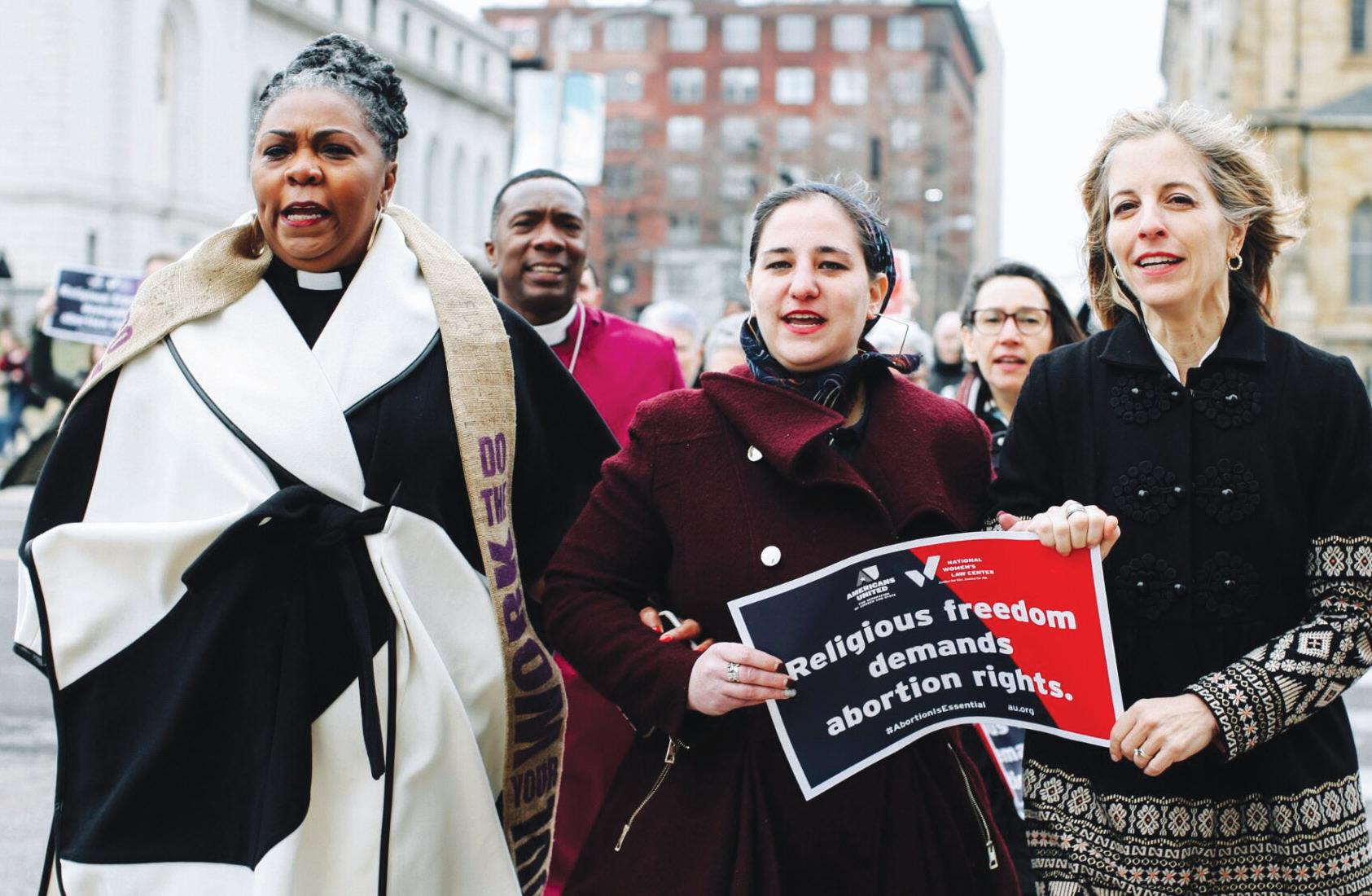 By Jackie Hajdenberg, JTA
By Jackie Hajdenberg, JTA
A Missouri judge upheld the state’s abortion ban June 14, rejecting efforts by a group of 14 interfaith clergy, including rabbis, who sought to protect reproductive rights by suing the state on religious freedom grounds.
The faith leaders, among them five rabbis from multiple Jewish denominations, filed their suit in January 2023. They charged that lawmakers who voted to ban nearly all abortions acted according to their personal religious beliefs, violating the separation of church and state enshrined in Missouri’s constitution.
The so-called “trigger bill” went into effect after the Supreme Court removed federal abortion protections in 2022 in Dobbs v. Jackson Women’s Health Organization.
In his decision June 14 upholding Missouri’s ban, St. Louis Circuit Court Judge Jason Sengheiser argued that the language of the state’s abortion law is “similar” to the language of the state constitution, which also includes language like “Supreme Ruler of the Universe” and “Almighty God.”
is not exclusively a religious belief.
“The Court does not accept Petitioners’ argument that the determination that human life begins at conception is strictly a religious one,” Sengheiser wrote. “While the determination that life begins at conception may run counter to some religious beliefs it is not itself necessarily a religious belief.”
In a statement issued June 14, Americans United for the Separation of Church and State, speaking on behalf of the clergy members, said they “respectfully” disagreed with the judge’s decision and would be discussing next steps with the faith leaders.
“Missouri’s abortion ban is a direct attack on the separation of church and state, religious freedom and reproductive freedom,” Americans United said in their statement.
Jewish clergy nationwide have been fighting in court for reproductive rights since the Dobbs decision.
Sengheiser also noted that the bill paraphrases language famously found in the Declaration of Independence stating that “all men are created equal, that they are endowed by their Creator with certain unalienable Rights, that among these are Life…”
The petitioners had argued in their lawsuit that the bill established its own religion. But Sengheiser wrote that the main argument of abortion opponents
“Missouri lawmakers made clear that they were imposing their personal religious beliefs on all Missourians when they enacted these laws.”
Jewish clergy nationwide — in Florida, Indiana and Kentucky as well as Missouri — have been fighting in court for reproductive rights since the Dobbs decision. Many have cited alleged religious freedom violations.
An Indiana Court of Appeals ruled in April that the state’s religious liberty protections may extend to those seeking an abortion, but the case will likely go to the state Supreme Court for a final ruling.
Sengheiser’s decision was made the day after the U.S. Supreme Court voted in favor of protecting federal access to medication abortion.






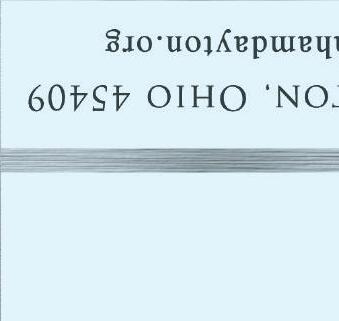












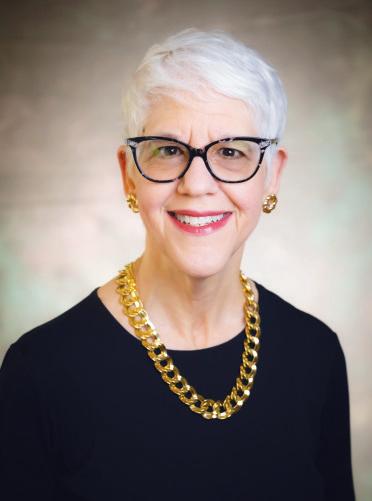




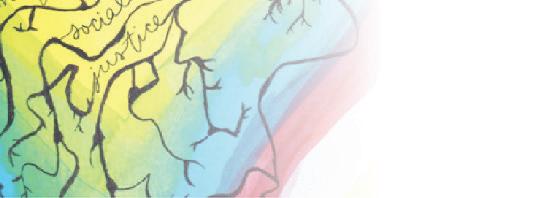







THE DAYTON JEWISH OBSERVER • JULY 2024 PAGE 9 Beth Abraham, Dayton’s only Conservative synagogue, is enthusiastically egalitarian and is a liated with the United Synagogue of Conservative Judaism. For a complete schedule of our programs, go to bethabrahamdayton.org. 305 Sugar Camp Circle Dayton, Ohio 45409 937•293•9520 www.bethabrahamdayton.org Shabbat Under The Stars Friday, July 26, 7:30 PM Welcome Shabbat amid the beauty of nature. This outdoor, spirited service takes place at one of our congregants’ homes and features our band. A dessert Oneg Shabbat follows. Contact o ce for location. Please join us as we celebrate Cantor Andrea Raizen in honor of her retirement Sunday, July 21 2 to 4 PM
$18 Per Person Children - No Charge RSVP by July 8 937-293-9520 or bas@bethabrahamdayton.org
(L to R) The Rev. Traci Blackmon, Maharat Rori Picker Neiss and Americans United for Separation of Church & State CEO Rachel Laser march to the Civil Courts building in St. Louis.
Americans United for Separation of Church & State
OPINION
Threatening Jews is now acceptable — so long as you call them Zionists
By Nora Berman, The Forward
It is now clear all manner of antisemitic sins can be indulged under the guise of opposing Zionism.
On June 10, Within Our Lifetime, a militant pro-Palestinian group that refuses to condemn Hamas’ Oct. 7 terror attack, led protests outside a Lower Manhattan exhibition about the massacre at the Nova Music Festival. They set off smoke bombs; a few carried Hamas and Hezbollah flags; others held signs saying “Long live Oct. 7th.”
On the subway that same night, in a filmed interaction that went viral, protesters leaving that demonstration asked any Zionists to identify themselves and leave the subway car, saying, “This is your chance to get out.” One man wearing a T-shirt with the Hezbollah flag on it harassed a passenger who was wearing a kipah, saying, “Yo we got a Zionist here I see your kipah. You’re not really Jewish,” and “We’re gonna find you and you’ll face the consequences.”
Within 24 hours, vandals defaced the home of Anne Paster-
nak, the Jewish director of the Brooklyn Museum, along with three museum board members. Red paint and upside-down red triangles — a symbol lifted directly from Hamas’ armed Al-Qassam brigade videos, which use the inverted red triangle emoji to mark Israeli targets — were splashed on their homes’ facades and front doors. A sign was hung across Pasternak’s home labeling her a “WhiteSupremacist Zionist.”

is the boldness of those using it, and their distinction between Jews — a marginalized group worthy of respect — and Zionists — worthy targets of violence.
What all these events made clear: Among those protesting the war, a clear subset is using the word Zionist as a catchall for Jew.
The speed at which blatant antisemitic bigotry appears to have become wrapped up in the package of opposing Zionism is breathtaking. So is the number of intelligent people, normally highly attuned to injustice, who are ignoring it.
There have always been those who use these terms interchangeably. What’s new
LETTER
Opaqueness puzzling and disturbing
As I write this, many of us are celebrating Israel’s recent daring and brilliant rescue of four hostages. But others — particularly in the media — are gnashing their teeth, accusing Israel of perfidy and intentional brutality. This, as we are learning of how media outlets have been uncritically parroting Hamas’ false narrative and statistics.
Amidst my own personal joy, I’ve been thinking of The Observer's article in the June issue about Wittenberg University Associate Prof. Michael Anes. The interview revealed his clear sympathies with the cause of our enemies. As one reads that interview, what is puzzling and disturbing is that not only does the professor self-identify as a Jew, but as an academic, he is supposedly a trained thinker.
Yet from his comments, one gets the clear impression that he has joined the teeth-gnashers, allowing his emotions to eclipse any critical thinking. Moreover, what is more puzzling and disturbing is that he refused to have a deeper discussion regarding his position and opinions with The Observer. One would think that if he truly believed what he says he believes, he would want to publicly make his case.
In the midst of this opaqueness, two things seem clear:
• We Jews have had to deal with malshinim/slanderers from among our own for centuries. Sadly, Jews betraying their own is not a new phenomenon, but it does continue to amaze and challenge us.
• Advanced degrees are no guarantees against broken moral compasses.
— Rabbi Cary Kozberg, Temple Sholom, Springfield
So, what do you think?
“Zionists are not Jews and not humans,” read a sign from protesters outside the Nova exhibit.
The survivors of the Nova at the exhibition? It’s OK to retraumatize them, because they’re Zionists, not Jews.
It’s fine to threaten subway passengers who are peacefully minding their own business, because if they’re wearing kipahs, they must be Zionists.
A Jewish museum director, whose home was targeted with a symbol used by a terrorist group to mark their victims? It’s fine, we don’t need to worry about her safety, because she’s a Zionist. (Pasternak’s friends say she has a long history of pro-Palestinian advocacy.)
What it boils down to: If we call you a Zionist, you deserve the consequences — whether they’re public threats, an invasion of your private life, or pure harassment. And if that behavior crosses the line from peaceful protest to aggressive antisemitism, well, Zionists deserve that too.
Worse still, these shifts have been broadly accompanied by an utter lack of accountability from anyone who counts themselves as pro-Palestine when it comes to disavowing this vile behavior. That silence tarnishes a very just movement to liberate Palestinians from decades of Israeli occupation.
These events are obvious bigotry. But I’m not seeing my progressive friends post about it online. I’m not seeing the non-Jewish authors, journalists, activists and lawyers that I so deeply admire for their
advocacy on trans rights, immigration, racial justice and criminal justice reform speak up and call out this appropriation of anti-Zionism to mask antisemitism.
I’m not seeing my well-meaning friends who rightfully speak up about the racism of Jewish settlers destroying aid convoys for Gaza, and violently expelling Palestinians from their villages in the West Bank, also condemn this festering hatred present in the pro-Palestinian movement.
To be clear, sometimes antiZionism is not antisemitic. But sometimes it is.
I recently saw a post on Instagram about the author’s volunteer efforts to get her block in Brooklyn designated as a landmark, in an effort to protect elderly Black homeowners from predatory landlords. In sharing the many obstacles the volunteers had overcome, my eye caught this line: “We have experienced Zionism first hand and it has been terrifying and taxing.”
I quickly scanned the rest of the post. Zionism popped up again: “To be preserving Black Bedstuy in the face of Zionism. At a time when our world needs to be free of it!!”
There are innumerable definitions of Zionism, but none of them remotely encompasses efforts to alter a neighborhood in Brooklyn. Gentrification and displacement are very real phenomena that disproportionately affect Black and Brown people, but they have nothing to do with Jewish self-determination.
The most likely scenario: This person interacted with a Jewish landlord or Jewishowned management company in their conservation battle. And while scummy landlords are the worst — I’ve lived in New York City for 13 years, I know — they come in all ethnicities and religions.
These sentences were straight-up, indisputable antisemitism, but the likes and “Congrats!” and “Good work sis!” cascaded onto the post, including from a journalist who works at The New York Times The author had also tagged a
New York City Council member who had aided their group.
The protests outside the Nova exhibition and the vandalism of Brooklyn Museum executives’ homes were universally decried by politicians across the political spectrum, most notably by Alexandria Ocasio-Cortez, who has not always pleased the Jewish community with her advocacy against arming Israel. (OcasioCortez, who encountered severe blowback from progressives and false accusations of being a paid shill for AIPAC after speaking out against antisemitism in a livestream June 8, is now seeing the consequences of calling out the moments when anti-Zionism is antisemitism.)
By not uniformly condemning these bad actors within the movement, supporters of Palestinian liberation are tanking their movement’s credibility, and giving ammunition to militant pro-Israel advocates who seek to discredit the entire project by dismissing it as antisemitic. How can anyone take a group like Within Our Lifetime seriously as a liberation movement, when people protesting within it say, “Zionists are not Jews and not human”? When it chooses to protest not outside the Israeli consulate, but at a memorial to victims of terror?
The collapse of Zionist as a useful or effective definition began long ago. In an op-ed for the Forward early this year, Lux Alptraum pointed out how the semantics of how the term is used can obscure shared values. “If two people can agree that they want peace and freedom for both Palestinians and Israelis,” she wrote, “does it matter if one of them identifies as Zionist and the other antiZionist?” Tamar Glezerman, the Israeli-American co-founder of Israelis for Peace whose aunt was murdered at Kibbutz Be’eri on Oct. 7, told The Guardian that the term “Zionist,” as it’s currently used, “could mean anything between someone who believes in two states coexisting peacefully to code for Jews who don’t deserve safety or life.”
The slipperiness of who a Zionist is has allowed for antisemitic rhetoric and violence to flourish. How far will it have to go until self-proclaimed allies of Jews call it out?
Nora Berman is the Forward’s deputy opinion editor.
PAGE 10 THE DAYTON JEWISH OBSERVER • JULY 2024
Send letters (350 words max.) to The Dayton Jewish Observer, 525 Versailles Dr., Dayton, OH 45459 • MWeiss@jfgd.net Views expressed by columnists, in readers’ letters, and in opinion pieces do not necessarily reflect the opinion of staff or layleaders of The Dayton Jewish Observer or the Jewish Federation of Greater Dayton.
Screenshot/X
The home of the Jewish director of the Brooklyn Museum, Anne Pasternak, was vandalized the morning of June 12.
UPCOMING EVENTS
WEDNESDAYS, 12:30 - 3:30PM Open Canasta
SUNDAY, JULY 21, 10AM - 12PM PJ Under 3 &
FRIDAY, JULY 12, 5:30 - 7:30PM Shabbat Summer Splash
Connect with us! Check out our events. For more information, check out our calendar at jewishdayton.org
2024 ANNUAL MEETING
Sunday, August 25 11:30AM – 1PM at the Boonshoft CJCE 525 Versailles Dr., Centerville, 45459
For more information, contact Alisa Thomas at athomas@jfgd.net
THE DAYTON JEWISH OBSERVER • JULY 2024 PAGE 11
July2024 JEWISH FEDERATION of GREATER DAYTON & ITS AGENCIES SUN MON TUE WED THU FRI SAT 30 1 2 3 4 5 6 7 8 9 10 11 12 13 14 15 16 17 18 19 20 21 22 23 24 25 26 27 28 29 30 31 1 2 3
Jewish Community Center OF GREATER DAYTON Jewish Family Services OF GREATER DAYTON Jewish Federation® OF GREATER DAYTON Jewish Foundation OF GREATER DAYTON
the Jewish Federation of Greater Dayton & its Agencies
for
Save the Date!
July2024
JEWISH FEDERATION of GREATER DAYTON & ITS AGENCIES


Shabbat
Summer Splash
Friday, July 12, 5:30 – 7:30PM
Orchardly Park
343 Wonderly Avenue, Oakwood, 45419
Join PJ Library and PJ Our Way as we celebrate summer fun at Orchardly Park! Enjoy a Kosher Shabbat meal, splash pad, sand box, the playground, and sports for the PJ Our Way kids.
No cost. RSVP by July 10
To register, visit jewishdayton.org/events
Questions? Please contact Kate Elder at kelder@jfgd.net

PJ Under 3
Sunday, July 21, 10AM – 12PM
Owen’s Place Park 2260 Dayton Xenia Road, Beavercreek, 45434
Join PJ Library and JCC Early Childhood Education for a get-together for families with children ages 3 and under (older siblings welcome). Enjoy bagels, fruit, and co ee at the shelter, then head to the playground with your friends. No cost. RSVP at jewishdayton.org/events by July 18
Questions? Contact Kate Elder at kelder@jfgd.net.

&
BLAST
Thursday, August 22, 6:30 – 9PM
Levitt Pavilion
134 South Main Street, Dayton, 45402
Enjoy a hot summer night at the Levitt Pavillion with Cool Cool Cool. The music is Funk, House and R & B.
Concert starts at 7:00PM. Look for the Boomers signs or balloons! Bring your own chairs, blankets, food, and drinks (NO GLASS).
No cost. Some food and drinks are available for purchase at the venue. Or carryout to support nearby restaurants!
RSVPs recommended to jewishdayton/events or contact Stacy Emo at semo @jfgd.net or 937-610-5513.
PAGE 12 THE DAYTON JEWISH OBSERVER • JULY 2024
July2024
May 10, 2024 8:45am-12pm 3.0 CEUs
*Meets Ethics Requirement*
School boards, city gov’ts, and the state legislature have enacted policies that impact gender diverse and queer youth—often by attacking the practice of health and human services providers. We’ll review current status of these policies, what the future may hold, and how to take advocacy, legal, & practice actions to preserve the right of social workers and other health and human service providers to provide care. We’ll also review how behavioral health professionals working with youth must adapt their practice in light of these laws.
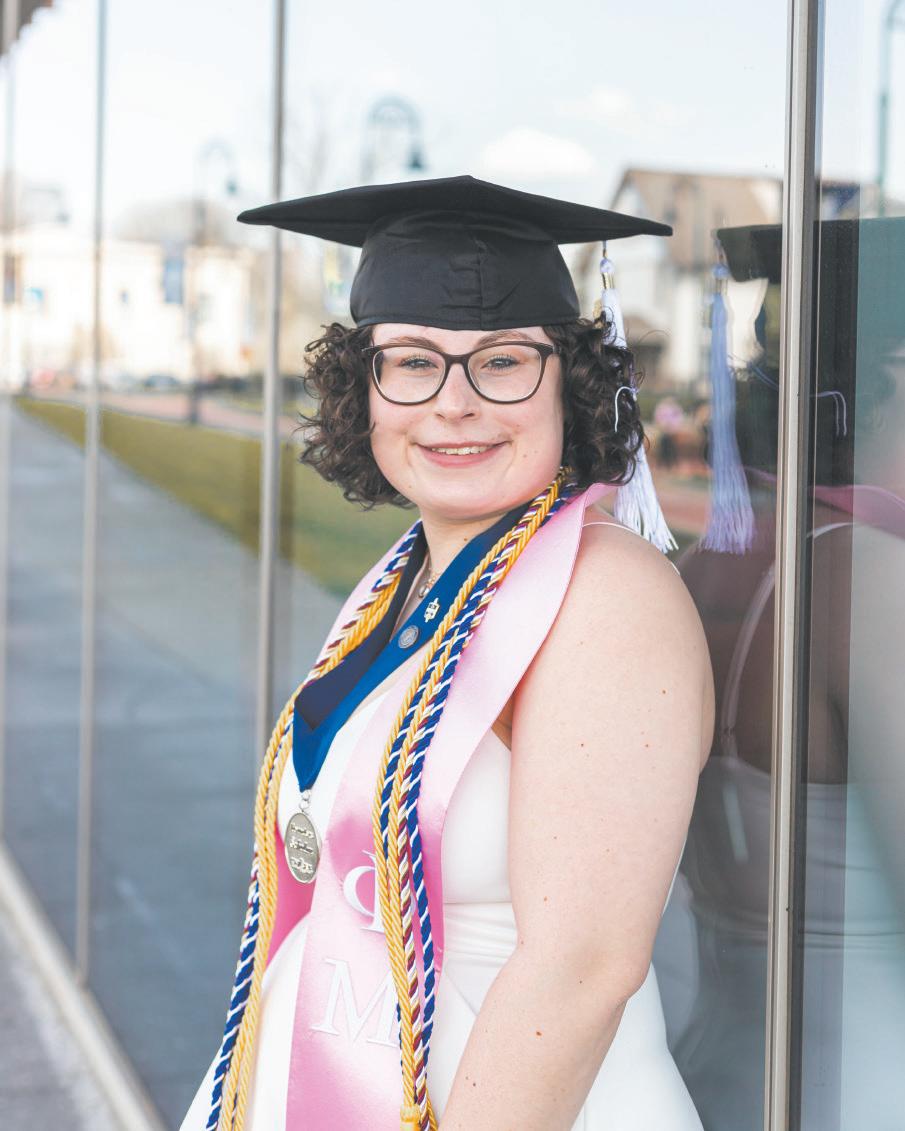



Supporting Teens with Mental Health Issues & School-Related Challenges
July 12, 2024 8:45am-12pm 3.0 CEUs
The Heuman Scholarship Awarded
This training will explore the mental health crises among teenagers within the school setting. We will discuss common mental health diagnoses for this population, tips for addressing behavioral challenges, and how we as professionals can help support these youth when resources may be limited.
The Jewish Foundation of Greater Dayton is pleased to announce Abigail Zied has been named as this year’s recipient of the Heuman Scholarship.
Presenter: Rachelle Kistner, M.Ed, PCC-S, LSW is the Program Manager for the ESC program with South Community Behavioral Health. She has 20+ years of experience working with youth and families in various settings such as foster care, juvenile corrections and school-based programming.
Abigail is a graduate of Kent State University, where she earned a Bachelor of Arts in Psychology (with a child psychology concentration), and minored in Human Development & Family Sciences, Jewish Studies, and Religion Studies.
is a social worker and the Executive Director of the National Association of
Mental Health Considerations for Individuals with Developmental Disabilities
Abigail will attend Case Western Reserve University this fall, where she will pursue a Master of Social Work degree. After graduation, Abigail plans to work as a social worker, with a focus on children. She enjoys working with children and wants to advocate for children and families who are struggling, in an e ort to help them improve their lives.
June 14, 2024 8:45am-12pm 3.0 CEUs
Trauma. Everyone has it. Everyone reacts differently understanding the effects of trauma helps us to be better therapists, caseworkers, parents, & humans. In our time together we will discuss how to define trauma and, more importantly, how to address trauma within our own bodies and the bodies of
August 9, 2024 8:45am-12pm 3.0 CEUs
While an undergraduate at Kent State, Abigail was an active member of Hillel, where she eventually served as president, served as the engagement chair and president of Achoti, a Jewish women’s organization, and was a member of Phi Mu Sorority, Psi Chi International Psychology Honor Society, and the Multicultural and Diversity Committee.
Abigail is a lifelong member of Temple Israel. Her proud parents are Eric Zied and Dena Mason-Zied.
Topics include understanding common mental health diagnoses among the population and providing strategies for assessment, intervention and support. Prevalence rates, common challenges faced by dually diagnosed clients, deescalation techniques, and ethical and cultural considerations will also be addressed.
Mazel tov, Abigail!
Presenter: Carol Kimbrough, MSW, LISW-S, is the Mental Health Services Mgr. at Mont. Co. Board of Developmental Disabilities Services (MCBDDS). Her undergraduate degree is in Rehabilitation Svcs., and she has worked as a therapist.
The Heuman Scholarship is made possible through a fund established by Bob and Vicky Heuman. Since its creation in 2006, the Heuman Scholarship has been awarded annually to an undergraduate or graduate student who demonstrates both academic achievement and financial need. The scholarship is open to Jewish students who reside in the Dayton area.
, is the CarePortal Regional Manager for the Greater Miami Valley Region. He is Social Resilience Model (SRM) certified, a Cost of Poverty Experience (COPE) facilitator, and a


The 2024 workshop series offers a total of 15 CEUs, approved for licensed social workers and counselors. Registrants must log in by the official starting time and complete the entire course to receive a CEU certificate. No exceptions.
Teens with Mental Health School-Related Challenges
Presenter: Mark Cummings, BSW, LSW, is a mental health therapist with experience providing support to persons with developmental disabilities and mental health needs, having worked with vulnerable populations in settings such as Dayton State Hospital and group homes.
Clinical Supervision Challenges in the Modern World
2024 SUMMER SERIES VIRTUAL WORKSHOPS
2024 SUMMER SERIES VIRTUAL WORKSHOPS
2024 8:45am-12pm 3.0 CEUs
Questions about the workshop topics? Contact Sabrina Chupp at schupp@fsadayton.org. Please note that Sabrina can NOT assist you with registration.
explore the mental health crises among the school setting. We will discuss health diagnoses for this population, tips behavioral challenges, and how we as help support these youth when resources
Politicization of LGBTQIA Youth & Providers in Ohio
NO REFUNDS. Fees prepaid for a missed workshop can be applied to another workshop in the same year by calling Jefferson Alcott at 937.223.7217 x1146.
*Meets Ethics Requirement*
Kistner, M.Ed, PCC-S, LSW is the Program
ESC program with South Community She has 20+ years of experience working families in various settings such as foster care, and school-based programming.
Health Considerations
10, 2024 8:45am-12pm
September 13, 2024 8:45am-12pm 3.0 CEUs
*Meets Supervision Requirement*
Calling all social workers and counselors! Join Jewish Family Services and its partners for a morning of online learning for 3 CEUs. Sessions will be held on the second Friday of every month through September.
Supporting Teens with Mental Health Issues & School-Related Challenges
July 12 • 8:45AM – NOON • 3.0 CEUs
Mental Health Considerations for Individuals with Developmental Disabilities
Supporting Teens with Mental Health Issues & School-Related Challenges
August 9 • 8:45AM – NOON • 3.0 CEUs
12, 2024 8:45am-12pm 3.0 CEUs
Clinical supervision has always been a challenging and complex dynamic within the mental health field. Modern times and events (post-COVID, advancement of technology, explosion of severe mental health issues among the populace, etc.) have further complicated the supervisory relationship and significantly increased ethical and legal risks and liabilities. This training will break down the etiology of these issues to help you better understand the challenges, as well as suggest a variety of supervisory interventions and tools to meet the demand competently and professionally.
Clinical Supervision Challenges in the Modern World
School boards, city gov’ts, and the state legislature have enacted policies that impact gender diverse and queer youth—often by attacking the practice of health and human services providers. We’ll review current status of these policies, what the future may hold, and how to take advocacy, legal, & practice actions to preserve the right of social workers and other health and human service providers to provide care. We’ll also review how behavioral health professionals working with youth must adapt their practice in light of these laws.
*Meets Ethics Requirement* School boards, city gov’ts, and the state legislature have enacted policies that impact gender diverse and queer youth—often by attacking the practice
Presenter: Danielle Smith is a social worker and the Executive Director of the National Association of Social Workers-Ohio Chapter. May 10, 2024 8:45am-12pm 3.0 CEUs
This training will explore the mental health crises among teenagers within the school setting. We will discuss common mental health diagnoses for this population, tips for addressing behavioral challenges, and how we as professionals can help support these youth when resources may be limited.
Registration and payment are required prior to the training, in order to receive your link to the Zoom session. The Monday prior to the training, you will receive an email with the Zoom link and details about accessing the training.
September 13 • 8:45AM – NOON • 3.0 CEUs
Presenter: Joshua D. Francis, Ph.D., LPCC-S, LICDC-CS, is an Associate Professor in the Clinical Mental Health Counseling Program as well as Director of the Addictions Counseling Program in the College of Education and Human Services at Wright State University.
Presenter: Rachelle Kistner, M.Ed, PCC-S, LSW is the Program Manager for the ESC program with South Community Behavioral Health. She has 20+ years of experience working with youth and families in various settings such as foster care, juvenile corrections and school-based programming.
Supporting Teens with Mental Health Issues & School-Related Challenges
3.0 CEUs
Health Considerations for Individuals with Developmental Disabilities
This training will explore the mental health crises among teenagers within the school setting. We will discuss common mental health diagnoses for this population, tips for addressing behavioral challenges, and how we as professionals can help support these youth when resources
THE DAYTON JEWISH OBSERVER • JULY 2024 PAGE 13 WORKSHOPS Family Services Approved Provider #RCS032101 understanding common mental health the population
providing strategies Dayton 2024 8:45am-12pm 3.0 CEUs
for
and
Individuals with Developmental Disabilities
Family Services Approved Provider #RCS032101 Family Services Association Graceworks Lutheran Services Jewish Family Services of Greater Dayton Catholic Social Services of the Miami Valley
by: Trauma Basics August 9, 2024 8:45am-12pm 3.0 CEUs Mental
July
Sponsored
of LGBTQIA
Providers in Ohio Family Services Approved Provider #RCS032101
Politicization
Youth &
REGISTRATION INFORMATION Register online at cssmv.org/events • $35 per session or $140 for all 5 Family Services Approved
Provider #RCS032101
May
3.0 CEUs
Politicization of LGBTQIA Youth & Providers in Ohio
Family Services Association Graceworks Lutheran Services Jewish Family Services of Greater Dayton Catholic Social Services of the Miami Valley Sponsored
July
Family Services Approved Provider #RCS032101
by:
12, 2024 8:45am-12pm
Catholic Social Services of the Miami Valley Family Services Association Graceworks Lutheran Services Jewish Family Services of Greater Dayton
of GREATER
JEWISH FEDERATION
DAYTON & ITS AGENCIES
July2024
JEWISH FEDERATION of GREATER DAYTON & ITS AGENCIES
Museum Field Trips
Tuesday, August 20
JCC Adults in partnership with the Beth Abraham Synagogue Program Committee, Beth Jacob Programming Committee, Temple Beth Or Adult Education Committee, and Temple Israel Adult Education Committee invite you and your friends to explore museums in our area! (age 16 and over are welcome)


11AM – 3PM • Lunch & Tour at the Nancy & David Wolf Holocaust & Humanity Center

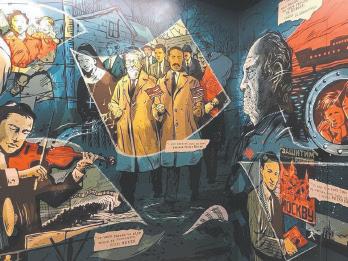
Union Terminal • 1301 Western Avenue, Cincinnati, 45203
• Meet at Temple Beth Or at 10 AM or Beth Jacob Synagogue at 9:30 AM, or at the Holocaust & Humanity Center in Cincinnati at 11 AM.
• 90-minute docent-led tour at the Nancy & David Wolf Holocaust & Humanity Center
• Cost for the tour is $10 per person upon registration (includes a parking pass). Carpools will be arranged. More event details to follow.
• Lunch after the tour at a nearby restaurant (TBD – cost on your own).
RSVP by Friday, August 16 to Stacy Emo at semo @jfgd.net or call 937-610-5513.








Tuesday, September 10
10:30AM – 1:30PM • Lunch & Tour at the National Museum of the United States Air Force

1100 Spaatz Street, Fairborn, 45433
• Meet at The National Museum of the United States Air Force at 10:30 AM for a docent-led tour of Prejudice And Memory: A Holocaust Exhibit.
• Tour to be led by Exhibit Founder, Dr. Renate Frydman, PhD.
• No cost for the exhibit tour, museum admission, or parking.
• Lunch after the tour at a nearby restaurant (TBD – cost on your own).
RSVP by September 5 to Stacy Emo at semo @jfgd.net or call 937-610-5513.



Look at Us shares works of artists and artisans with a Dayton connection.



At jewishdayton.org: works by Jewish artists from the collection of the Dayton Art Institute including Sol LeWitt, Roy Lichtenstein, and Alexander Liberman.




















































Works by local artists and artisans including Cathy Gardner, calligraphy; Elyssa Wortzman, fine arts; Gayle Moscowitz and Caryl Segalewitz, glass art; Stephen Goldberg, Mike Ja e, and Sam Lauber (of blessed memory), photography; Marlene Pinsky, quilting; and Steve Markman (of blessed memory), Burt Saidel, and Scott Segalewitz, woodworking.
Wednesday, August 21


















5:30 – 7PM at the Dayton Art Institute • 456 Belmonte Park North, Dayton, 45405














Jewish Artists & Artisans in Dayton





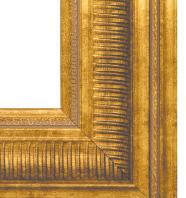
Featuring an exhibit of local artists and artisans and presentation by Dayton Jewish artist Hannah Kasper Levinson. Optional self-guided tour of museum and reception to follow presentation
No cost, RSVP by Friday August 16 to Stacy Emo semo @jfgd.net or 937-610-5513.
In partnership with Beth Abraham Synagogue, Beth Jacob Congregation, Temple Beth Or, and Temple Israel
PAGE 14 THE DAYTON JEWISH OBSERVER • JULY 2024
Funding provided by an Innovation Grant of the Jewish Federation of Greater Dayton.
Jewish Community Center OF GREATER DAYTON
MLB veteran Kevin Pillar enjoys late-career resurgence
John Cordes/Icon Sportswire via Getty Images

Kevin Pillar celebrating in the dugout after hitting a two-run home run against the New York Yankees, May 28 in Anaheim, Calif.
By Jacob Gurvis, JTA
ANAHEIM, Calif. — In a home game against the Houston Astros on June 7, Kevin Pillar crushed the first pitch he saw 411 feet into the leftfield stands — giving the L.A. Angels their first and only run in a 7-1 loss.
But for Jewish fans, the most memorable plays of the game may have come in the first and fifth innings, when Pillar fielded two balls in center field off the bat of Astros third baseman Alex Bregman. Both ballplayers are Jewish.
Pillar, 35, says moments like that have begun meaning more to him, too. Now in his 12th season in a journeyman career
that has seen him play for nine teams, Pillar has gradually realized, in his words, that he has “become a little bit more of an idol, a folk hero for the Jewish community” eager to see Jews on the field.
“Being a Jewish baseball player, I never really thought anything about it,” said. "But now, you just understand there hasn’t really been a lot of Jewish baseball players to play in the major leagues, and it’s just been a cool thing to be able to tap into a different part of me that I didn’t really understand the importance and the value of.”
He said he appreciates “be-
Continued on Page 22
Classes
Beth Jacob Classes: w. Rabbi Agar. Tuesdays, 7 p.m.: Torah Tuesdays on Zoom. Thursdays, 7 p.m.: Thursdays of Thought on Zoom. Call to register, 937-274-2149. bethjacobcong.org/beth-jacobhappenings.
Temple Beth Or Classes: Sundays, 12:30 p.m.: Adult Hebrew. Thurs., July 4, 7 p.m.: Chai Mitzvah in person & Zoom. templebethor.com/ events. 5275 Marshall Rd., Wash. Twp. 937-435-3400.
Temple Israel Classes: Tues., July 16, 23, 30, noon: Talmud Study in person & Zoom. Wednesdays, 10 a.m.: Torah Queeries w. Rabbi BodneyHalasz, at Temple. Thurs., July 18, 3:30 p.m.: Living w. Ambiguous Loss w. Rabbi Bodney-Halasz. Fri., July 12, 11 a.m.: Living w. Loss w. Rabbi Bodney-Halasz. Saturdays, 9:15 a.m.: Virtual Torah Study on Zoom. Sat., July 13, 9:15: Torah Study in person. For Torah Study Zoom info.,
CALENDAR
496-0050.
Children
JCC Camp Shalom: Through July 26. For rising grades 1-9. Contact Suzzy Nandrasy, snandrasy@jfgd.net.
Chabad Camp Gan Israel: Mon., July 22–Fri., Aug. 9. Register at cgidayton.com. 2001 Far Hills Ave., Oakwood. 937-643-0770.
Family
PJ Library & PJ Our Way Shabbat Summer Splash: Fri., July 12, 5:30 p.m. Free. Kosher Shabbat meal, splash pad, & playground. Register by July 8, jewishdayton.org/ events. For info., contact Kate Elder, kelder@jfgd.net. Orchardly Park, 343 Wonderly Ave., Oakwood.
Temple Israel Prayer & Play: Fri., July 19, 5:30 p.m. Infants–2nd grade. At home of Rabbi Sobo. 937-496-0050.
PJ Library & JCC Early Childhood Education PJ Under 3:
Kate Elder, kelder@jfgd.net. Owen’s Place Park, 2260 Dayton Xenia Rd., Beavercreek.
PJ Library & PJ Our Way w. Hillel Academy Shabbat in the Park: Fri, Aug. 2, 5:30 p.m. Free. Register at jewishdayton.org/events by July 31. For info., contact Kate Elder, kelder@jfgd.net. Iron Horse Park, 6161 Millshire Dr., Centerville.
Adults
JCC Canasta Lessons: Wednesdays, 12:30-3:30 p.m. Free. Boonshoft CJCE, 525 Versailles Dr., Centerville. Contact Stacy Emoff, semoff@ jfgd.net.
Community
Beth Abraham 'Raizen' Our Voices: Sun., July 21, 2 p.m. Honoring Cantor Raizen on her retirement. $18, kids free. RSVP by July 8 to bas@ bethabrahamdayton.org or 937-293-9520. 305 Sugar Camp Cir., Oakwood.
Beth Abraham Shabbat
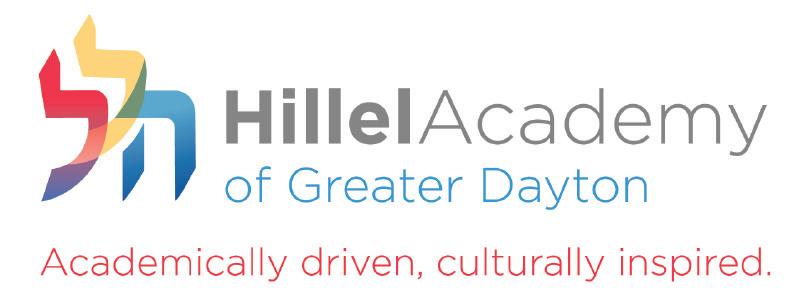

Now accepting PreK-6 applications for the 2024-25 school year. NEW FOR 2024-25 — HALF-DAY PRE-K daytonhillel.org • 937.277.8966 • asmith@daytonhillel.org
Academy’s 2024 Graduates.
Congratulations to Hillel
Principal Dr. Anna Smith, Simon Hakim, Shmuel Simon, Eden Atzmon, Adina Baumgarten, Judaics Dir. Rabbi Levi Simon.
Beth Abraham Synagogue
Conservative Rabbi Aubrey L. Glazer
Cantor/Dir. of Ed. & Programming
Andrea Raizen
Fridays, 5 p.m.
Saturdays, 9:30 a.m. 305 Sugar Camp Circle, Oakwood. 937-293-9520. bethabrahamdayton.org
Beth Jacob Congregation
Traditional Rabbi Leibel Agar Saturdays, 9:30 a.m. Evening minyans upon request. 7020 N. Main St., Dayton. 937-274-2149. bethjacobcong.org
Temple Anshe Emeth Reform
320 Caldwell St., Piqua. Contact Steve Shuchat, 937-7262116, ansheemeth@gmail.com. ansheemeth.org
Temple Beth Or Reform
Rabbi Judy Chessin
Asst. Rabbi/Educator Ben Azriel Fridays, 6:30 p.m. 5275 Marshall Rd., Wash. Twp. 937-435-3400. templebethor.com
Temple Beth Sholom Reform
Rabbi Haviva Horvitz 610 Gladys Dr., Middletown. 513-422-8313. templebethsholom.net
Temple Israel Reform
Senior Rabbi Karen BodneyHalasz Rabbi/Educator Tina Sobo Fri., July 5, 6 p.m. Fridays, July 19, 26, 6:30 p.m. Saturday, July 13, 10:30 a.m. 130 Riverside Dr., Dayton. 937-496-0050. tidayton.org
Temple Sholom Reform
Rabbi Cary Kozberg Fridays, 6 p.m. 2424 N. Limestone St., Springfield. 937-399-1231. templesholomoh.com
What our flag stands for
By Rabbi Judy Chessin
Temple Beth Or
On June 14, 1777, our Stars and Stripes became the first national flag of the United States, when the Continental Congress passed the first Flag Act to establish an official standard for the new nation and show solidarity with the Continental Army.
Perspectives
In 1960, our current United States flag was adopted with 50 stars to represent the 50 states and 13 stripes to honor the original colonies. The red color symbolizes valor, the white symbolizes purity, and the blue represents justice.
The flag was designed to be a unifying symbol, but nearly two and a half centuries later, some people view it as provocative.
Some argue that "right-wing extremists" have co-opted the flag, while others display the Stars and Stripes upside down in protest of governmental corruption and the perceived erosion of civil rights.
count 56 stars! How can that be?
This flag was sewn in the Mauthausen concentration camp in Austria. During the spring of 1945, rumors began to spread throughout the camp that American forces might soon liberate Mauthausen!
So the Jewish prisoners came up with a plan. They would greet their liberators with an American flag to thank the soldiers for giving them back their lives.
The camp members gathered every scrap of material wherever they could find them: sheets from the laundry, red fabric from old Nazi banners, the blue-gray cloth from their ragged prison jackets. For countless hours, they worked secretly in the nighttime, sewing stitch after stitch, with hope in their hearts and faith for the future.
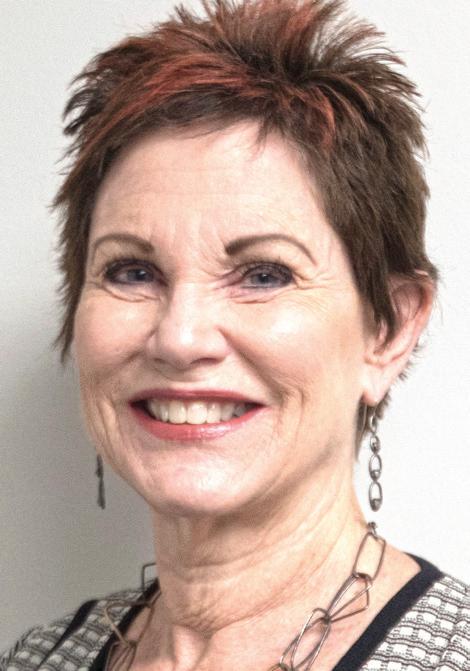
But these were Jews from Poland, Lithuania, and Austria. How were they supposed to know the number of stars and stripes on an American flag?
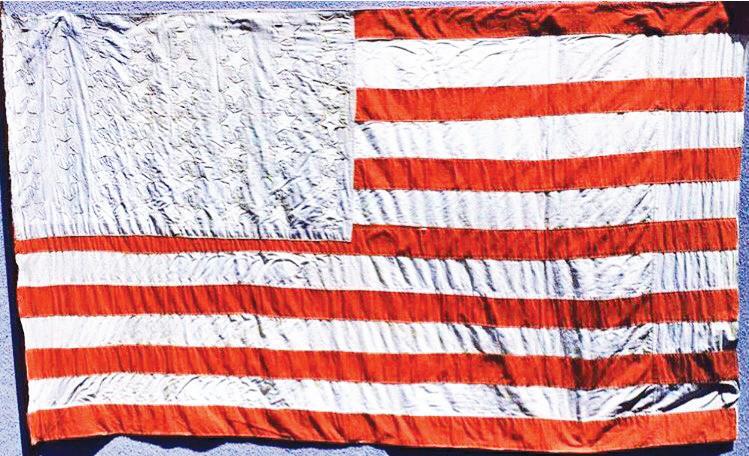
thal, a prisoner in Mauthausen then, would later comment, "The stars were for hope, justice, tolerance, friendship, brotherly love, and understanding. In the stripes, we saw the road to freedom!"
Wiesenthal himself was one of the very prisoners liberated that day, May 5, 1945.
Chabad of Greater Dayton
Rabbi Nochum Mangel
Associate Rabbi Shmuel Klatzkin Youth & Prog. Dir. Rabbi Levi Simon. Beginner educational service Saturdays, 9:30 a.m. 2001 Far Hills Ave. 937-643-0770. chabaddayton.com
Yellow Springs Havurah Independent Antioch College Rockford Chapel. 1st & 3rd Saturday each month. Contact Len Kramer, 937-5724840 or len2654@gmail.com.
In contrast, a unique American flag that Jews might doubly celebrate this season was created at the Mauthausen concentration camp.
If you look closely at this Star-Spangled Banner, you will
July

July 5: 8:50 p.m.
July 12: 8:47 p.m.
July 19: 8:43 p.m.
July 26: 8:37 p.m.
While they got the 13 stripes correct, they mistakenly attached 56 stars. Perhaps they believed there were 56 states?
Or, as another theory has it, since no one knew for sure, they put on as many stars as would fit.
In any case, Simon Wiesen-

Torah Portions
June 6: Korach (Num. 16:1-18:32; 28:9-15)
June 13: Chukat (Num. 19:1-22:1)
June 20: Balak (Num. 22:2-25:9)
June 27: Pinchas (Num. 25:10-30:1)
When the 11th Armored Division, the Thunderbolt, arrived to liberate the camp, and its leader, Col. Richard Seibel, jumped down from his tank, the survivors presented him with their gift — the American flag. Col. Seibel took the flag, held it up, and kissed it. With tears in his eyes, he thanked the survivors, recognizing the extraordinary courage it took to make this flag, no matter how many stars. Seibel tore down the Nazi flag and insignia waving over Mauthausen camp and, in its stead, flew this proud symbol of freedom for as long as American forces were stationed there.
As the famous Nazi hunter later said, "America for us was a symbol of all we had lost. I barely weighed 90 pounds that day, and like so many others, I was too weak to walk, but seeing that American flag rekindled something in each of us. Every star on the flag stood for something precious we had lost; one for hope, one for freedom, one for justice."
In a time of divisive partisan rhetoric, we would do well to remember what our flag stands for, both at home and abroad.
May the sight of Old Glory
reignite the spirit of unity within us.
Fittingly, after the death of Col. Seibel, the flag went to the Simon Wiesenthal Center, since
Fast of the 17th of Tammuz
July 23
Commemorating numerous calamities that fell on the Jewish people on this day, this fast is observed from dawn until dusk. Among the calamities were the breach of the walls of Jerusalem by the Babylonians in 586 B.C.E. and by the Romans in 70 C.E. Marks the beginning of the Three Weeks, a period of mourning for the destruction of the First and Second Temples in Jerusalem, culminating on the Ninth of Av.
Even if we disagree with our politicians or their platforms, our nation's success is built on our shared values and aspirations.
As Americans, let's look at our flag and honor the sacrifices made for justice, freedom, and hope. Let's renew our pride in our country and strive to be a nation that truly embodies the ideals represented by our flag.
May the sight of Old Glory reignite the spirit of unity within us, and may each star symbolize hope, freedom, and justice for all.
On Flag Day, 1917, President Woodrow Wilson stated, "This flag, which we honor and under which we serve, is the emblem of our unity, our power, our thought and purpose as a nation. It has no other character than that which we give it from generation to generation. The choices are ours."
PAGE 16 THE DAYTON JEWISH OBSERVER • JULY 2024
ADDITIONAL SERVICES RELIGION
CONGREGATIONS
Shabbat Candle Lightings
Sivan/Tammuz
Rabbi Judy Chessin
The American flag sewed by Mauthausen prisoners freed by the Allies on May 5, 1945 is on display at The Museum of Tolerance, the educational arm of the Simon Wiesenthal Center.
Tolerance
Museum of

To celebrate Rabbi Samuel Fox's 100th birthday, he and his wife of 72 years, Miriam, their children, grandchildren, and great-grandchildren met with Israeli President Isaac Herzog May 20 at the Presidential Residence in Jerusalem. Rabbi Samuel Fox served as Beth Jacob Congregation's rabbi from 1955 until his retirement in 1995. Born in Lokatch, Poland, May 28, 1924, Rabbi Fox's family immigrated to Milwaukee in 1929. The Fox family celebrated their patriarch's special birthday over Shabbat in Efrat. Rabbi Fox chanted the Haftarah and hosted a kiddush lunch with the same menu served at his bar mitzvah 87 years ago.
The celebration continued in Jerusalem, May 31 at the home of Bracha and Yitzhak Zuriel when the rabbi and rebbetzin joined a reunion of 40 former Daytonians who now live in Israel.
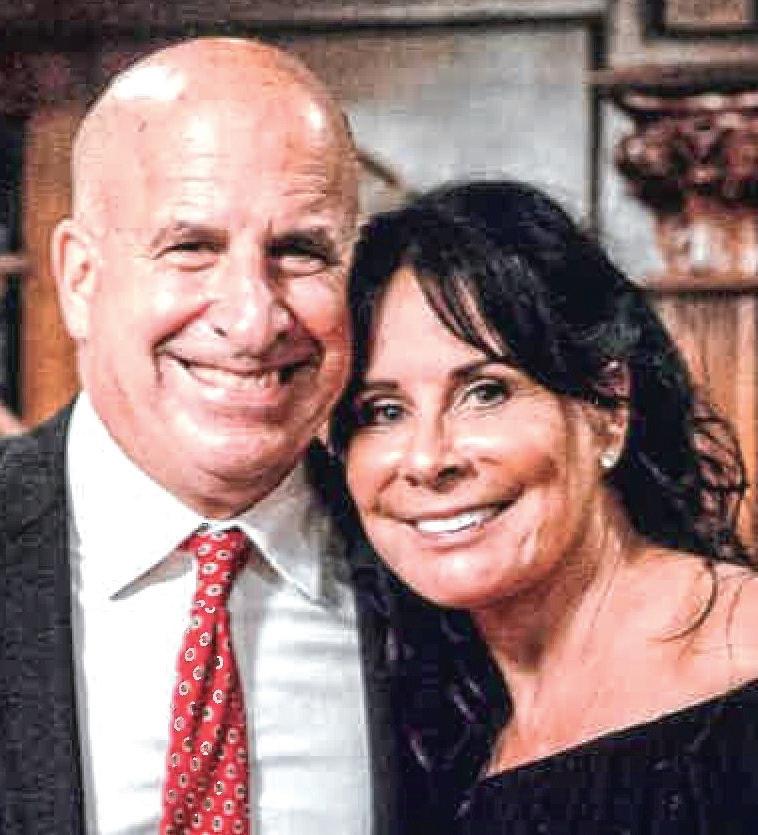
After a four-year renovation, the Folger Shakespeare Library in Washington, D.C. reopens June 21 with a new exhibit drawn entirely from the collection of Stuart and Mimi Rose Imprints in Time features 52 items from Stuart and Mimi's collection of books and manuscripts from the fields of science, religion, philosophy,
literature, and history across several centuries.
Works on exhibit include an Egyptian Book of the Dead from the first century B.C.E.; a first edition of Nicolaus Copernicus’ De revolutionibus (1543), which first proposed the heliocentric view of our planetary system; a first edition of Galileo Galilei’s Dialogo, which defended Copernicus’ view of the solar system and was inscribed by Galileo himself; a first trade edition of Winnie-the-Pooh, inscribed by author A. A. Milne to his son; J.R.R. Tolkien’s page proofs, corrected in his hand, for The Lord of the Rings; an advance press copy of Martin Luther King Jr.’s I Have a Dream speech; and a section of the Apollo 11 flight plan that Neil Armstrong and Buzz Aldrin had with them on the moon.
“We wanted to recreate the feeling of being in Stuart and Mimi’s library for this exhibition,” noted Greg Prickman, the Folger's librarian and director of collections and exhibitions, who curated Imprints in Time
Stuart served on the Folger’s board for 10 years. He encouraged the Folger to add as much space as possible to display its sizeable collection of early modern European materials. In recognition of his advocacy and support of the renovation project, the hall where the special exhibitions gallery is located is named The Stuart and Mimi Rose Rare Book and Manuscript Exhibition Hall.
University of Dayton Assistant Prof. of Religious Studies
Abraham Rubin is a visiting research fellow at Goethe University's Buber-Rosenzweig Institute in Frankfurt, Germany this summer to complete work on his book, Conversion and Catastrophe in German-Jewish Émigre Autobiography, to be published with University of Toronto Press. Abraham will also conduct research at the The German National Library's German Exile Archive for his next book project, which focuses on the postwar politics of Jewish-Christian reconciliation in the life and writings of Schalom Ben-Chorin, Margarete Susman, and Hans-Joachim Schoeps.

This year's Dayton Business Journal 40 Under 40 honorees include Jessica Blimbaum, Goodwill Easterseals Miami Valley director of data strategy; Martin Foster, Economy Linen & Towel Service vice president; and Dan Sweeny, Dayton Children's Hospital's population health director.

Mark Gruenberg was elected Temple Beth Or's new president at its June 17 board meeting.
Hannah Dritz, daughter of Dr. Michele and Dr. Jay Dritz, was confirmed at Temple Israel on June 11.
sponsored by Bain Consulting and will move to its Los Angeles office after previously working in Dallas. She is a 2015 Centerville High School graduate. Her undergraduate degree is from Vanderbilt University. Her proud family includes parents Scott and Ann Liberman of Centerville, sister Deborah Liberman of Plainfield, Ind., and grandparents Marilyn and Harvey Liberman of Knoxville, Tenn., and Conrad Rennemann Jr. of Centerville.
“Stuart maintains that books and manuscripts need to be seen and experienced in order to be enjoyed,” Folger Director Michael Witmore explained in the show announcement. Imprints in Time will be on exhibit through Jan. 5.
Jane Fischer, who arrived in Springfield three years ago to serve as development director of the Clark County Historical Society, has been promoted to the position of executive director. A native of Philadelphia, Jane is a member of Springfield Rotary and the Greater Springfield Association of Fundraising Professionals.
The Charles F. Kettering Foundation has appointed The Collaboratory founder Peter Benkendorf to its first cohort of Kettering Foundation Dayton Democracy Fellows. The fellowship is designed to support "innovative leaders, changemakers and dreamers who are building movements for inclusive democracy in their communities and in our wider world."
Judah Schwartz, son of Pam and Andy Schwartz and grandson of Lois Spetter and Syd Gross, Allan Spetter and Claudia Birch, graduated from Oakwood High School Magna Cum Laude with an honors diploma. Judah earned his Eagle Scout rank with Boy Scout Troop 320. He was also on Oakwood High School's Quiz Bowl Team, a member of the National Honor Society, and Spanish Honors Society. He'll attend Dickinson College.
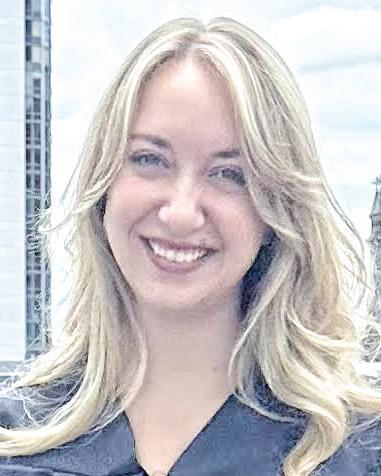
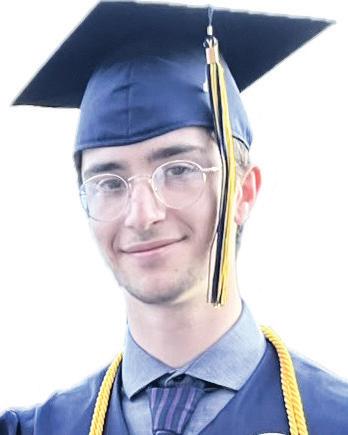
Sarah Blum Routman, daughter of Connie and Stanley Blum, has been named program director of Rimon: the Minneapolis Jewish Arts Council, an initiative of the Minneapolis Jewish Federation. Sarah, a published poet, photographer, author, and painter, served as executive regional director of BBYO for Minnesota and the Dakotas, Hillel director and leadership instructor at the University of Minnesota, and taught high school English and drama in Florida and Georgia before launching her own business as a speaker, consultant, and coach. She is a certified Laughter Ambassador and Laughter Yoga instructor. Her paintings and photography are part of a triple artist showcase at the Tychman Shapiro Gallery at the Sabes JCC in Minneapolis through July. Her book, Discover the Power of Laughter, coauthored with her twin sister, Rachael, comes out this summer.
Andrea Liberman received her MBA from the University of Pennsylvania's Wharton School of Business. She majored in marketing and operations and was a nonprofit board fellow for BalletX, president of the Wharton Dance Studio, and a member of the Jewish Association of MBAs. She was
Ben Lambert of Lansing, Mich., carries forward the mission of his late grandfather-in-law, Holocaust survivor Robert Kahn Ben, who is married to Aliza Weiss, will run in the New York City Marathon Nov. 3 as a member of Team Blue Card, which raises funds and awareness for Holocaust survivors living at or below the poverty level in the United States. Ben will run the marathon in memory of Bob, who died at age 100 in April. "He believed we all had a part to play to help make the world a better place," Ben noted. "There are over 200,000 Holocaust survivors alive today worldwide and over 81% of them are in need of either ongoing or additional financial assistance to afford basic needs, such as adequate food and healthcare."
Send your Mazel Tov announcements to mweiss@jfgd.net.
THE DAYTON JEWISH OBSERVER • JULY 2024 PAGE 17
TOV! GPO
MAZEL
Rabbi Samuel and Miriam Fox and the Fox family with Israeli President Isaac Herzog, May 20 in honor or the rabbi's 100th birthday.
Stuart and Mimi Rose
Jane Fischer
Hannah Dritz
Judah Schwartz
Andrea Liberman

Jewish food maven Joan Nathan dishes all in autobiography
By Rachel Ringler, The Nosher
Joan Nathan had just settled in for a conversation about her most recent book, My Life in Recipes, when the food writer became distracted.
A media personality was coming for lunch the next day, she said, but she realized she was missing two of the ingredients for the matzah balls she planned on serving. She paused to search for what she needed while also musing about what substitutes she might use in their place.
A few days later, Nathan reported success: The luncheon was “lots of fun” and the matzah balls were delicious, she said, though she added, “They could have been cooked a tad bit more.” That forthright response is in line with the Joan Nathan readers have come to know from her 12 cookbooks.
In April, Nathan, 81, released her 436-page autobiography, My Life in Recipes. It looks back at her storied career, from her childhood in Providence, R.I., to the research and writing that has made her the undisputed doyenne of Jewish food writing. Not that Nathan says she has spent much time thinking about her broader impact.
“I guess I have made a big contribution to the Jewish
world. I never thought about it,” she said. “I humanized Jewish food all over the world and I think I made it important for people to realize it is part of their lives.”
The stories in My Life in Recipes date back to before Nathan’s birth in 1943. Many of the recipes that accompany and enrich the memoir were passed down within her family, like the matzah balls (tweaked with the addition of nutmeg and freshly grated ginger); a sweetand-sour fish reminiscent of a dish her father enjoyed growing up in Augsburg, Germany; her German great-grandmother’s challah, made with mashed potatoes; and her mother’s coleslaw.

all these years that I have been writing,” Nathan said. “She (my mom) probably took it originally from The Settlement Cookbook and then she played around with it. That is how home cooks do it.”
Other recipes in the new book, such as kolo, an Ethiopian barley snack, were picked up from friends and from some of the people in out-of-the-way places Nathan has met and befriended over her many years as a food writer.
'Food can break down barriers and bring people together.'
Nathan believes the coleslaw — made with orange juice and pickle juice — is a riff on a recipe that first appeared in a 1901 cookbook published by a Jewish woman to help recent immigrants, many of whom were Jewish, integrate into American life.
“Sometimes there are familial salads, secret salads, that you want to keep within the family. These are things I have learned and respected over

In 1970, when she was 27 — following graduate studies in French literature at the University of Michigan and a stint working as a bilingual assistant in French and English at the United Nations — Nathan moved to Israel and eventually became Jerusalem mayor Teddy Kollek’s foreign press attaché.
While in that position, she became intrigued by the good food served in people’s homes in Jerusalem. That interest culminated in the first of her cookbooks, The Flavor of Jerusa-
lem, which she wrote with her friend Judy Stacey Goldman.
During that same 30-month period, she had a defining meal that changed the trajectory of her life. She and Kollek were invited to a local Arab village to meet with the mukhtar, or village head. Kollek didn’t want to go because he knew that the mukhtar wanted a new road built, one that would be very expensive. But they went and by the end of the sumptuous repast at the mukhtar’s home, the village got a road and Nathan got a lifelong career.
Exploring the world through food
“That meal showed me how food can break down barriers and bring people together,” she writes. “I understood then that food is not ornamental — it is central, and worthy of study — and that I could explore the world through food.”
Following her return to the United States in 1974, Nathan married attorney Allan Gerson,

whom she met in Israel. They moved to Boston, where she studied at the Kennedy School of Government at Harvard University. While there, she wrote a paper, Food Traits: An Overlooked Component of Ethnic Identity, for a class on ethnicity and politics taught by Daniel Patrick Moynihan, who soon after was elected to the U.S. Senate, representing New York. Nathan also wrote about ethnic food for a column in The Boston Globe. When she and her husband moved to Washington, D.C. in 1977, she found a niche at the Washington Post in focusing on Jewish food.
Mitchell Davis, a food consultant who spent 27 years at the James Beard Foundation, most recently as its chief strategy officer, recalls Nathan as among a handful of women who “had a tremendous passion and precision and capacity to understand and translate different food cultures around the world” and made a broad impact as a result.
“If Julia (Child) was the first, I put Joan in my mind along with Marcella Hazan for Italian food, Madhur Jaffrey for Indian and Paula Wolfert for Moroccan food,” he said. “Because of her persistence and precision, and finding the story and getting it right, she did for Jewish food what all of those people did for other cuisines.”
Nathan gets her stories by finding her way into people’s homes and kitchens and listening to them.
Food writer Leah Koenig, who is the author of seven cookbooks including the encyclopedic Jewish Cookbook, remembers a trip she took to Israel in 2010 with Nathan to explore what Koenig calls “the then-burgeoning food scene there.”
“I remember one day in the Jerusalem shuk where she literally followed her nose into the
PAGE 18 THE DAYTON JEWISH OBSERVER • JULY 2024
Joan Nathan and her latest cookbook, her 12th.
Hope Leigh
kitchen where a man was preparing an interesting chickpea dish," Koenig said. "I watched in awe as she asked him question after question. Her genuine enthusiasm and curiosity were absolutely infectious and she walked away with a story, a recipe, a friend, and a source she could return to.”
Cookbook author Katja Goldman spent a couple of afternoons in her kitchen with Nathan about 30 years ago, once to shape challah with her and another time for a story about varieties of stuffed pasta, such as Italian tortellini and Chinese wontons.
Goldman showed Nathan how she made kreplach, an Eastern European meat-stuffed dumpling that is served in soup. “She had me show her how to do it, discussed the process and asked a lot of questions,” Goldman said.
Nathan gets people to open up to her and share their recipes by showing an interest in them. “When you want their recipe, you are acknowledging that you accept them as human beings,” Nathan said. “They will share with you. It’s being yourself with somebody and showing an interest. You have to get into their homes.”
In 1994, Nathan received a James Beard Award for Best American Cookbook for her fifth cookbook, Jewish Cooking in America, in which she documents, in her words, “how varied Jewish food can be.” Most of the recipes are attributed to the individuals who shared them with Nathan, with introductory notes about the roots of the recipe.
Swisher recently asked Nathan if Israeli food was stolen from Arab cuisines — a charge often leveled against it —Nathan said she does not delve into food politics.
Yet she also offered an answer about hummus: “It’s not stolen,” Nathan said, adding that it was popular across the region. She credited American Jews who began traveling more regularly to Israel in the late 1960s with popularizing the chickpea spread in the United States.
She also said she was saddened by the friendships between Jewish or Israeli food writers and Arab food writers that were “destroyed” amid the current Israel-Hamas war.
She said she hoped to see a ceasefire, and offered a suggestion for a dish that could one day become associated with memorializing the Oct. 7 attack on Israel the same way that hamantashen are a symbol of survival on the Jewish holiday of Purim.
Mujaddara, a lentil-andbulgur dish that appears in My Life in Recipes, is fitting both because it is popular among Arabs and Jews in the Middle East, Nathan said, and because it is often eaten before Tisha B’Av, a Jewish holiday of mourning.
“Why would you have something happy to memorialize a tragedy?” Nathan asked. “But it tastes good…and it’s a humble dish. That’s what I would use.”
'Food is not ornamental — it is central, and worthy of study'
Nathan began My Life in Recipes, which she claims will be her last book — “I have written a dozen! That’s good!” — when the pandemic struck in 2020.

Joan Nathan's Raspberry-Walnut Rugelach
By Joan Nathan, The Nosher
When I was in Montreal at Hof Kelsten, a stellar Jewish bakery-deli, I tasted the best rugelach ever.
The cream cheese dough was shaped into small rectangular pockets, overflowing with strawberry jam and nuts. Although the chef would not share the recipe, he did tell me the ingredients, and I realized his pastry is very similar to my own, a simple American cream cheese butter dough so good that one reviewer in Montreal mistook Hof Kelsten’s version for a French mille-feuille pastry!
Many years before that, when watching a knish maker on the Lower East Side, I was struck by the way she cut her dough, using the side of her hand. I’ve done the same with my rugelach since then, to have a connection to the past.
Besides the dough, it is the high-quality jam and not too finely chopped toasted nuts — plus the old-fashioned cutting technique, which creates pockets in warm, jam-filled cookies — that make the recipe.
I also heat the oven to 400 degrees and then, as soon as I put the rugelach in, turn it down to 350 degrees, to help set the crust.
Here it is, with all the recipe’s deliciousness.
From My Life in Recipes: Food, Family, and Memories, 2024 by Joan Nathan. Excerpted by permission of Alfred A. Knopf, a division of Penguin Random House.
jar, and let it infuse for at least a day.
Put the cream cheese, butter, and sugar in the bowl of a stand mixer fitted with the paddle attachment. Cream until blended, about two minutes.
Scrape the sides of the bowl, then add the flour and salt and mix until a very soft dough is formed, about one more minute.
Scrape the dough onto a sheet of plastic or food-grade silicone, wrap it tightly, and refrigerate for two hours or overnight.
Line two baking sheets with parchment paper. Divide the dough into four balls, then pat each into a rough square.
Roll one piece into a rectangle about ⅛-inch thick (roughly 9 by 12 inches). Spoon a fourth of the jam onto the rectangle, then spread it almost to the edge, leaving about a half-inch border all around. Sprinkle on a fourth of the nuts.
Roll the dough up along the long side, like a jelly roll, tucking in the ends and positioning it seam side down.
Using the side of your hand like a knife, cut the roll into eight pieces (this causes the dough to crimp partially shut, whereas an actual knife would create a more spiraled appearance).
Place the slices on the prepared baking sheets, repeating with the remaining dough and filling. You should have 16 cookies per baking sheet. Refrigerate for at least one hour.
“She makes the point very early on in Jewish Cooking in America that Jews have always adapted to where they have gone and have taken advantage of local ingredients,” said Matt Sartwell, managing partner of Kitchen Arts and Letters, a Manhattan bookstore specializing in culinary themes.
In her chapter in the memoir titled My Holiday is Passover, she shares a recipe for gefilte fish made with American halibut, a saltwater fish, which is a change from the classic gefilte fish made with the whitefish and carp found in Eastern European lakes.
In a food world increasingly rife with controversy over the origins and cultural ties of particular foods, Nathan in some ways represents a throwback to a simpler time.
When podcast host Kara
“My husband had just died, it was a time of reflection,” Nathan said. “I looked at the body of my work and I wanted to share it. It took a long time to get ready to write it because I had to go through all of my letters and my files. I had to contact people I hadn’t spoken to in 50 or 60 years.”
Nathan’s Rolodex is packed after decades of culinary exploration. But she believes forging more intimate relationships around food can be just as powerful as discovering previously unsung food traditions in far-flung places.
“It is so important for children to talk to their parents and their grandparents and find their past and their path to the future,” she said. “We need the connection. Otherwise we will all be the same. And we don’t want to all be the same.”
Prep Time: 15 minutes + 3 hours chill Cook Time: 30 minutes
For the rugelach:
8 oz. cream cheese, at room temperature
1 cup (2 sticks) unsalted butter, at room temperature
2 Tbsp. granulated sugar
2 cups unbleached all-purpose flour pinch of salt
1 cup thick, good-quality raspberry or strawberry preserves
¾ cup walnuts, toasted and finely chopped
(but leave some slightly larger chunks)
2 Tbsp. vanilla sugar, for sprinkling
For the vanilla sugar:
4 cups sugar
1 vanilla bean pod
To make vanilla sugar: Put about four cups of sugar in a bowl or a glass jar with a lid. Take a vanilla-bean pod and carefully cut down the length, flicking out the beans from the center of the vanilla.
Submerge the pods in the sugar, close the
Preheat the oven to 400 degrees with two oven racks in the middle. Remove the rugelach from the refrigerator, and use your fingers to crimp the edges shut.
Any jam that oozes out will caramelize beautifully, so don’t worry too much about that.
Sprinkle the cookies generously with the vanilla sugar. Put the sheets into the oven, and immediately decrease the temperature to 350 degrees.
Bake for 15 minutes, then swap the baking sheets, rotate them back to front, and bake for about 15 minutes more, or until the rugelach are golden on top. Transfer them to racks to cool.
Notes
Use this vanilla sugar whenever you want to make a pastry with vanilla, even if the recipe doesn’t call for it, or if you wish to sprinkle it on your rugelach. It needs to infuse for at least a day before use.
The rugelach dough needs to chill in the refrigerator for two hours or overnight.
The assembled rugelach need to chill in the refrigerator for at least one hour before baking.
THE DAYTON JEWISH OBSERVER • JULY 2024 PAGE 19
Gabriela Herman
JEWISH FAMILY EDUCATION
Law or justice?
Judaism's Worldview Series
Two men appeared as disputants before Rabbi Heschel of Kraków, stated their claims, and left. As the rabbi deliberated, one man returned with a bag of gold coins and a request to decide the case in his favor, quickly leaving emptyhanded.
At dinner that evening, Rabbi Heschel took out the bag of coins and began
 Candace R. Kwiatek
Candace R. Kwiatek
counting them, holding them aloft, even passing them around for his puzzled guests to examine.
Suddenly the rabbi asked, “Can you distinguish any fault in these coins?” Heads shook all around. He nodded.
“They were given to me today as a bribe. I simply wished to demonstrate to you that there is no intrinsic difference between ordinary coins and those given in bribery — except that the latter are given as bribes.”
“Corruption was not a problem at the beginning of history,” writes legal
expert Timothy Martin. In the ancient world, “offerings” were made to gods or leaders, not as bribes but as tributes in hopes of securing favors.
As civilizations arose, the rule of law became necessary for society to function as desired. Its development is evident as early as the third millennium B.C.E. in the literary references and artifacts of Ebla, Ur-Nammu, and Hammurabi.
The longest continuouslypracticed law codes, however, are those in the Torah. Initiated at Sinai in the second millennium B.C.E. and recorded in their current form on scrolls after the Babylonian Exile, a significant proportion of laws are still, directly or indirectly, observed today.
Among them is the biblical command, “You shall not take a shochad (offering, bribe, gift, or any form of benefit) which makes the clear-eyed blind and the words of the just crooked.”
dational values.
This is evident in the wording of the above bribery law that essentially says, “Don’t bribe because it upends justice.”
The interwoven nature of justice and biblical law is expressed in the Hebrew.
Tzedek is justice expressed as righteousness, that is, ethical behavior in relationships with others and the world in which we live.
Mishpat is the pursuit of justice through laws and legal processes. And din is overarching judgment of actions and their consequences, not their intentions. Have actions — righteous or otherwise — or legal processes been accomplished in a just manner? Have their consequences increased justice in the world…or not?

With its 613 Commandments from the Torah alone, Judaism has often been called legalistic. However, focusing on individual laws misses their collective purpose: justice, one of Judaism’s foun-
“Justice, justice you shall pursue,” the Torah implores us (Deut. 16:20). Pursue it through law, pursue it in word and action. Pursue justice justly.
Coins. Preparing to visit family in a distant village, a widow secretly hid her gold coins in clay pots, filling them to the brim with honey. Happy to watch over the pots, her neighbor borrowed a bit of honey one day and discovered the hidden treasure.
Jews. He put the rabbi on trial, but the jury concluded there was no evidence to convict.
Undeterred, the cunning inquisitor proposed a new public trial, “We’ll put this matter before God by drawing lots. Inside this box,” he pointed, “are two scraps of paper, one labeled guilty and the other not guilty. If the rabbi draws out the one labeled guilty, he will be immediately executed. If he draws not guilty, he will be free to go.
Rabbi Pinchas remarked cynically, “How just.” He drew out a scrap and promptly swallowed it.
“Wha- ??” sputtered the inquisitor. “Now we’ll never know!”
“On the contrary,” responded the rabbi. "If the remaining scrap says guilty, then clearly the one I ate must have said not guilty.”
He regarded Torquemada knowingly. Cornered, the inquisitor reluctantly removed the second scrap. “Guilty.” Red-faced with rage, Torquemada had no choice but to let the rabbi go free.
Teens. In a Virginia courtroom, five teens pled guilty to unlawful entry and destruction of property for having vandalized a historic Black school with racist and antisemitic graffiti.
The judge noted the boys, three of whom were minorities, had no prior legal encounters, and “(n)one of them seemed to appreciate…the seriousness of what they had done.”


Our Town by Thornton Wilder
COLLEGE OF LIBERAL ARTS
Learn more about the 2024–25 season and get tickets at wright.edu/boxoffice
Carrie: The Musical, inspired by the Stephen King novel
The Apple Tree, with music by Jerry Bock and Sheldon Harnick
Much Ado About Nothing by Shakespeare
Everybody, a modern adaptation of the morality play Everyman
Alice by Heart by Steven Sater and Duncan Sheik
Spring Dance Concert , with the Wright State Dance Ensemble and its partners
After removing the coins, she refilled the jars with honey. When the widow returned, she discovered her gold was missing. But with no evidence against her neighbor, the court dismissed her complaint.
Having overheard the unhappy tale, young David suggested that the women and jars be brought to Saul’s royal court. There, David broke the jars one by one until two coins were exposed, stuck to the inner side of a broken jar. Found guilty, the neighbor was sentenced to return the coins, replace the broken jars, and fill them to the brim with honey.
'Justice, justice you shall pursue.'
So she prepared an unusual sentence recommendation that included reading works by prominent Black, Jewish, and Afghan authors; visiting the U.S. Holocaust Memorial Museum; writing a research paper on hate speech and its effects on minority communities, and more.
After completion, their cases would be dismissed. The judge expressed hope that the unusual sentences would be both educational for the boys and a step toward healing for the community.
Lots. In 1478, the monarchs Ferdinand and Isabella established the Spanish Inquisition. The Pope appointed Tomás de Torquemada as its grand inquisitor in 1483.
Once, when the perpetrator of a severe crime in Seville couldn’t be identified, Torquemada accused the esteemed Rabbi Pinchas, expecting conviction to foment a backlash against the heretical
Our days are filled with countless opportunities to bring tzedek (justice) into the world by how we speak, treat others, tackle problems, address social issues, formulate solutions, administer the law, and more, all guided by the Torah’s laws.
As Rabbi Tarfon taught: It is not your duty to finish the work, but neither are you at liberty to neglect it.”
Literature to share
Doña Gracia Saved Worlds by Bonni Goldberg. The complicated story of Jewish heroine Doña Gracia is beautifully captured with simple text and rich illustrations in this engaging book for primary ages. Woven throughout are bits of Sephardic history, Jewish culture, and even geography alongside values of resilience, community, freedom, and making a positive difference.
Unstuff Your Life! Kick the Clutter Habit and Completely Organize Your Life for Good by Andrew J. Mellen. If you regularly lose your keys or phone, can’t open your closet doors without an avalanche, or dread opening your mushrooming email or photo apps, this book may be your solution. Read the chapters that address your needs or listen to the audio while you commute.
PAGE 20 THE DAYTON JEWISH OBSERVER • JULY 2024
Wright
State Theatre and Dance Announces Its 2024–25 Season!
Arts&Culture
The Irish & the Jewish: natural allies
Book Review
By Martin Gottlieb Special To The Observer
In mid 20th-century Chicago, there was a shoe store chain called O'Connor and Goldberg. Adult Jews thought that was so funny: an only-in-America story. Younger Jews didn't really see anything noteworthy about the name until their elders explained.
Now comes a book about the connections between the Jews and Irish in this country at the turn of the 20th century and beyond. The book isn't about connections in the business world, though. It focuses on government, unions, and schools, perhaps because that's where the memoirs are, and that's where the media coverage was.
The author of Opening Doors: The Unlikely Alliance Between the Irish and the Jews in America (St. Martin's Press, July 30, 2024, 257 pages) is Hasia R. Diner, a prolific author of books about both Jewish American and Irish American history.
Protestant establishment as corrupt — recruited Jews.
Being part of Tammany brought benefits for the struggling immigrants: connections that could lead to jobs or breaks from tough enforcement of city rules or even food or other forms of help when things got really rough.
Similarly, when the Irish were at the forefront of the early labor union movement as the industrial age matured, Jews were natural union members, especially in the clothing industry. The Irish not only organized them, but nurtured them as leaders.
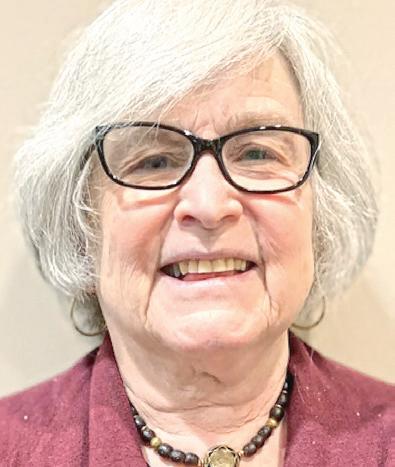
A prepublication version of her book has this remarkable statement: “Hasia Diner is a professor of American Jewish history and former chair of the Irish studies program at New York University.”
The book's story is basically this: The Irish got here first, roughly speaking, near the middle of the 19th century. When the Jews — the next major immigrant group — got here in big numbers later in the century, they came mainly to the places where the Irish had concentrated: the big cities, especially New York.
The Irish were still fighting to be accepted and respected by the preexisting Protestant majority. Anti-Catholic prejudice was rampant.
In that context, the Irish saw the Jews as natural allies in the battle against prejudice and against the Protestant power structure.
The Irish who were running Tammany Hall — the Democratic machine in New York that was largely abjured by the

As for the schools, at a certain stage, Irish American women were a huge presence among high school teachers. Many saw Jewish immigrant children — replete with language difficulties — as versions of themselves and their families a generation earlier.
Tight bonds developed.
When the Ku Klux Klan flourished in the 1920s, Catholics (largely Irish) were a more common target than Jews. That experience also fostered the feeling among the Irish that they were in the same boat as the Jews.
The story of cooperation is particularly striking in higher education. While the Ivy League schools and other old-line Protestant schools had quotas limiting Jews, the Catholic universities — Fordham, Loyola, DePaul — reached out to them and produced major numbers of Jewish professionals.
The author is struck by her inability to find any evidence of discrimination, prejudice, or hard feelings between the Catholics and Jews of the time — say, the 1930s — either among students or between students and faculty.
Of course, the Irish-Jewish connection wasn't always sweet. There was, perhaps
most notably, Father Charles Coughlin, the notoriously antisemitic radio priest of the 1930s. He had a major Irish following.
But even in that case, author Diner notes, many leading Irish American figures came to the defense of Jews against him. Of course, he was also increasingly pro-Hitler, which cost him much support among the Irish, as elsewhere.
Opening Doors fills a gap in the historical knowledge of most people. It's a story that needed to be told.
Unfortunately, it's not a great read. It sometimes seems to be a list of connections between specific Jews and specific Irish in specific tasks.
Names of people and organizations fly by in quantities that cannot possibly be remembered, however impressed one must be by the research.
But the abundance of names is necessary to make the point: The historical Irish-Jewish connection is not just a matter of a few cute O'Connor-and-Goldberg type anecdotes, but a broad-based phenomenon that deserves a spot in our understanding of Jewish American history.
Retired Dayton Daily News editorial writer Martin Gottlieb is advisor to The Dayton Jewish Observer.



















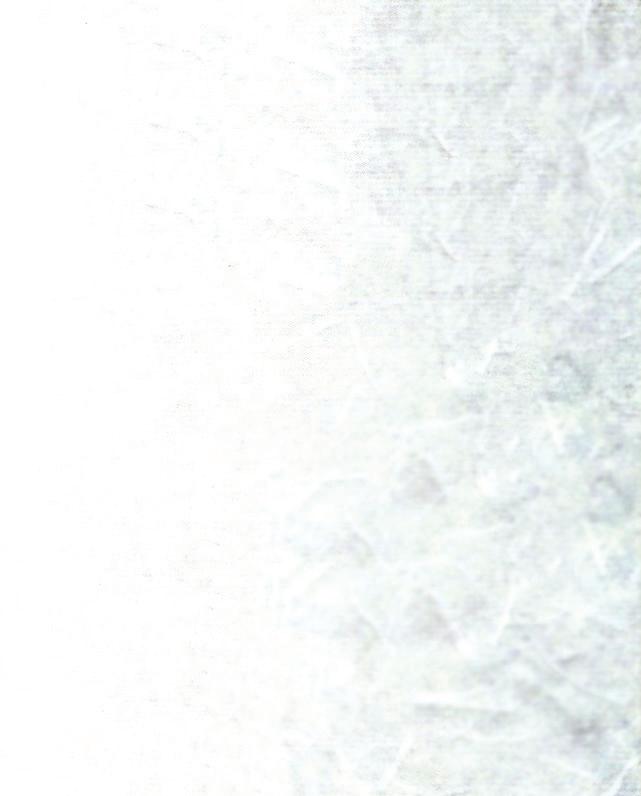

THE DAYTON JEWISH OBSERVER • JULY 2024 PAGE 21
A Healthy Alternative We Use The Best Ingredients Prepared Fresh Daily CJ CHAN MSG www.mycjchan.com 536 Wilmington Ave. Dayton, OH 45420 937-259-9866 2ND LOCATION! 2747 W. Alex Bell Rd. Moraine, OH 45459 * Hot Pot Available * 937-259-8882 Mon-Thu: 10:30 am-10 pm Fri-Sat: 10:30 am-10:30 pm Sun: 11:30 a.m-10 pm Contact Patty Caruso at plhc69@gmail.com to advertise in The Observer. Opening Doors fills a gap in the historical knowledge of most people. It's a story that needed to be told. MANAGEMENT RECRUITERS OF DAYTON BUILDING THE HEART OF BUSINESS Staffing Needs? Call The Professionals! Jeff Noble • 937-228-8271 mridayton.com • info@mridayton.com
43 S. Main Street Centerville, Ohio 45458 937-433-9598 Custom, New, and Estate Summer Sale July 25th-27th. Up to 50% off all inventory!
Hasia R. Diner

OBITUARIES

‘If we don’t take care of our cemeteries, who will?’ — Matt Arnovitz
In the 1920s, scores of Arnovitz family members le Poland and immigrated to the United States. ey came to the Dayton area to create a new home and found success as merchants. Decades later, Matt Arnovitz and his aunt Beverly Saeks feel an emotional connection to their parents, grandparents, cousins and dozens of other family members who have found their eternal home at Beth Abraham’s cemetery.
“I have so much history here,” said Beverly. “ is cemetery is just so peaceful. I take great pride in how beautiful it looks.”
“My family helped build the synagogue and community,” said Matt. “It’s up to us and our generation to take care of the cemetery for the future.”
For Elaine Arnovitz, whose parents Fred and Ruth Scheuer are also buried at Beth Abraham’s cemetery, she believes “It’s a mitzvah when we work together for the bene t of our community.”
Jewish Cemeteries of Greater Dayton is an endowment organization created to maintain our three Jewish cemeteries in perpetuity. Please join us as we strive to maintain the sanctity, care, and integrity of these sacred burial grounds.

Morris Jacob Heider, age 77 of Boca Raton, Fla., passed away May 27 at Baptist Health Boca Raton Hospital. After graduating from The Ohio State University, Morris spent his early years as a metals dealer in Dayton; moving to Florida, he focused on recycling management with Hollywood Scrap Recycling. Most recently, he invested in land development with Creative Land Management. He was preceded in death by his parents, Samuel and Phyllis Heider. Morris is survived by his loving wife, Kathyn LeGrand-Heider; daughters, Molly Rae LeGrand Weiner and Kelly Rose LeGrand Weiner; and grandson, Wilder Edward Druckerman; sisters and brothers-in-law, Linda and Larry Richards, Sharon Heider; Mark and Nancy LeGrand, Stephen LeGrand and Sharon Ott, Monica and Dan Trudell. Interment was at Beth Jacob Cemetery.



Lillian R. Winnegrad, 94, passed away peacefully on May 26. Lillian was preceded in death by her parents, Menashe and Esther Friedman; husbands Irving Winnegrad and Stuart Enfield; and sisters Sylvia Levitt, Molly Lesser, and Mary Friedman. She is survived by her children, Jim (Janice) Winnegrad and Ken (Lorrie) Winnegrad; grandchildren Melissa, Emily, Kenzi and Kody Winnegrad; and great-grandson Zane Manns. Lillian was born in Dayton on Sept. 25, 1929. After graduating from Miami University, she returned to Dayton and began a career in education, teaching children ranging from grades K through three. She married Irving in 1954. Jim was born in 1956 and Ken in 1960. Her children were special to her, and she loved doing things as a family. After encouraging her children to join a theatre group, Lillian also became active on the Dayton Community Theatre board and acted in several shows. She became involved with the boys’ elementary school, serving as PTA president. She loved watching the
Kevin Pillar
Continued from Page 15
ing able to give a Jewish kid that’s either from Southern California, Israel or another country, Canada, wherever, someone to look up to.”
Since he arrived at Angel Stadium at the beginning of May, he’s been setting quite an example. Pillar, who grew up in Los Angeles and played college baseball at nearby California State University, Dominguez Hills, was brought on to replace superstar Mike Trout, who is injured. In 25 games
boys play baseball and softball. After her boys, her No. 1 sports love was the Cincinnati Reds. She loved to watch them on TV or listen on the radio. Later in life, she stayed busy by becoming a Diet Workshop coach, helping people to lose weight. She loved being a BBG advisor and working with high school girls, many of whom knew her as “Aunt Lil." After Irv passed, she remarried in 1986 to Stuart Enfield. After retiring from teaching, she took a part-time position selling cruises. She and Stu did a lot of travelling, and they eventually became snowbirds in the Phoenix area. Lil spent the final two years of her life very happily at Montage of Mason in Cincinnati. Lil made friends wherever she went. Whether it was her neighbors, her fellow synagogue members, the theatre group, schools, Arizona or her assisted living facility these past two years, she always loved socializing. Interment was at Beth Jacob Cemetery. Donations in her memory may be made to the charity of your choice.
with the Angels, he’s sported a .381 batting average with six home runs and 22 RBI. For Angels fans, Pillar’s offensive outburst has been a bright spot in a so-far losing season. His mother, Wendy, is Jewish, and his father, Mike, is Catholic. The Pillars celebrated both Chanukah and Christmas, he said, and he had a bar mitzvah largely out of respect for his grandparents, who were observant.
One Jewish connection from his childhood has endured: Pillar played in the same Little League as retired Jewish MLB catcher Ryan Lavarnway, and though the two never played together professionally, they’ve stayed in touch. Lavarnway said Pillar’s dedication speaks to his strength of character.
“For him to be so loud and proud about it now, it just speaks volumes,” Lavarnway said about Pillar’s Jewish identity. “The way that he’s done it has been exactly how you would want it. If you are a parent, and you want your kid to have a role model, Kevin Pillar is exactly who you would want it be. He’s someone that I have been proud to know, someone I’m proud to have come from the same area, and someone that I’m proud is another Jewish player in the league.”
PAGE 22 THE DAYTON JEWISH OBSERVER • JULY 2024 Larry S. Glickler, Director Dayton’s ONLY Jewish Funeral Director 1849 Salem Avenue, Dayton, Ohio 45406-4927 (937) 278-4287 lgfuneralhome@gmail.com GLICKLER FUNERAL HOME & CREMATION SERVICE L’dor V’dor. From Generation To Generation.
North Main Chapel 1706 N. Main Street Huber Heights Chapel 5844 Old Troy Pike Pre-need Arrangements Pre-paid Funeral Trusts Cremation Services • Transfers For Both Locations Call 937-275-7434 Funeral Homes, Inc. Our
Serving Your Family For More Than 90 Years
Family
525 Versailles Drive • Centerville, OH 45459 Preserving our Past Ensuring Our Future daytonjewishcemeteries.org

One-year subscription to The Observer and acknowledgment in The Observer ($18 value)
One-year subscription, acknowledgment in The Observer and one free one-column holiday greeting ($30 value) Name Address
One-year subscription, acknowledgment in The Observer and one free three-column holiday greeting ($54 value) $18
Fill out your name as you wish it to appear in The
Ad sales and Jewish Federation support only cover a portion of our expenses to bring you The Observer Printing costs and postage go up. We need your help to ensure the depth of our coverage doesn’t go down. $250


$1,000 Champion
One-year subscription, one-year acknowledgment in The Observer and three free three-column holiday greetings ($126 value)
All listed in Guardian Angel, plus the gratitude of knowing how much you help support Jewish journalism in the Miami Valley. ($126 value)
Renewing Angel
Natalie R. Cohn
Double Chai
Victoria Minor
Susan Kahn Rapoport
Fred Sinder
Subscriber
Wanda Yates
Current Observer Champion + Andrea Scher Rabiner
Current Observer Champions
William Marwil
Howard Michaels
Milton Nathan
Current Guardian Angels
Dr. Douglas & Mrs. Bethany Einstein
Tara & Adam Feiner
Marni Flagel
Steven & Penney Fraim
Bella Freeman
Elaine & John Gaglione
Carol Graff
Susan & Jonas Gruenberg
Robert & Vicky Heuman
Neil & Gina Kahn
Marilyn & Larry Klaben
Laurence A. Lasky
Drs. Perry & Renata Lubens
Marvin & Susan Mason
Gary Pacernick
Bernard Rabinowitz
Brenda Rinzler
Lee and Patti Schear
Greg Schreck In memory of Dorothy Cherny Shane by
Stanley J. Cherny
Zerla Stayman
Steve & Shara Taylor
Temple Anshe Emeth
Current Angels
Jeffrey Abrahams
Elaine Abramson
Karen & Steve Arkin
Ken Baker, K.W. Baker & Assoc., LLC
The Barrett Family
Skip & Ann Becker
Michael & Amy Bloom
Frieda Blum
Sylvia Blum
James & Margaret Brooks
Judith & Steven Carne
Don Charles
Scot & Linda Denmark
Susan Dlott
Howard & Sue Ducker
Bruce & Debbie Feldman
Lynn Foster
Stanley Frankowitz
Felix Garfunkel
Mrs. Jack Goldberg
Stephen Goldberg
Kim & Shelley Goldenberg
Lynn & David Goldenberg
Debby & Bob Goldenberg
Michael Goldstein
Martin Gottlieb
John Gower
Judi & George Grampp
Art & Joan Greenfield
Syd & Lois Gross
Harold & Melissa Guadalupe
Dr. & Mrs. Stephen Harlan
Ralph & Sylvia Heyman
Barbara Hollander
Martin & Joan Holzinger
Linda & Steve Horenstein
Joan Isaacson
Rachel Jacobs
Michael Jaffe
David & Susan Joffe
Joseph & Marsha Johnston
Linda Ohlmann Kahn & Dennis Kahn
Jeffrey Kantor
Susan & Stanley Katz
Allan & Linda Katz
Harriet Klass
Cantor & Mrs. Jerome Kopmar
Ellen & Michael Leffak
Edye Leuin
Sarah Moore Leventhal
Laurie & Eddie Leventhal
Todd & Gabriele Leventhal
Meredith Moss Levinson
Norm & Kay Lewis
Ellie Lewis
Judy Lipton
Beverly A. Louis
Donald & Carole Marger
Scott & Brenda Meadow
Suzi & Jeff Mikutis
Kristen Mitchem
Irvin & Gayle Moscowitz
Eleanor Must
Bobbie & Jack Myers
James Nathanson
Myrna Nelson
In honor of Natalie M. Davis RN NICU
Neonatal, Cedar Sinai Hospital, L.A.,
grandaughter of Martin Nizny
Phil Office
Ann Paddock
Sharyn Reger
Susan & Nathaniel Ritter
Alice & Burt Saidel
Barbara Sanderow
Diane Schultz
Linda & Joel Shapiro
Katherine Sher & Jared Serota
Michael Silverman
Diane Lieberman Slovin
Allan Spetter & Claudia Birch
Susan Spiegel & Lisa Hanauer
Jeff & Cathy Startzman
Myron Stayman
Maggie Stein
Marc & Maureen Sternberg
Col. Jeffrey Thau, USAF, (Ret.) & Rina Thau
Bob & Suzanne Thum
Mr. Lawrence Wagenfeld
The Waldman Family
Ms. Judith Weber
Donald & Caryl Weckstein
Michael & Karen Weprin
Ronald Bernard & Judy Woll
THE DAYTON JEWISH OBSERVER • JULY 2024 PAGE 23 If you value what we do, help us continue.
Guardian Angel
Angel
$100
Subscriber
$36 Double Chai
City State Zip Phone E-mail
Observer via mail:
no
(check one) I currently receive The
yes
Name Address City State Zip Phone E-mail (check one)
Observer via mail: yes no
Observer:
Currently receives The
make
payable
Dayton Jewish Observer.
you!
Here’s a gift subscription for someone special: Please
checks
to The
Thank
Please consider a Voluntary Subscription to The Dayton Jewish Observer. BMB Observer mascot Bark Mitzvah Boy Return with payment to: The Dayton Jewish Observer, 525 Versailles Drive, Dayton, OH 45459 The Dayton Jewish Observer New & Renewing Voluntary Subscribers, May 8 - June 4 To make your Voluntary Subscription, go to daytonjewishobserver.org or use the form above.
generosity.
Thank you for your





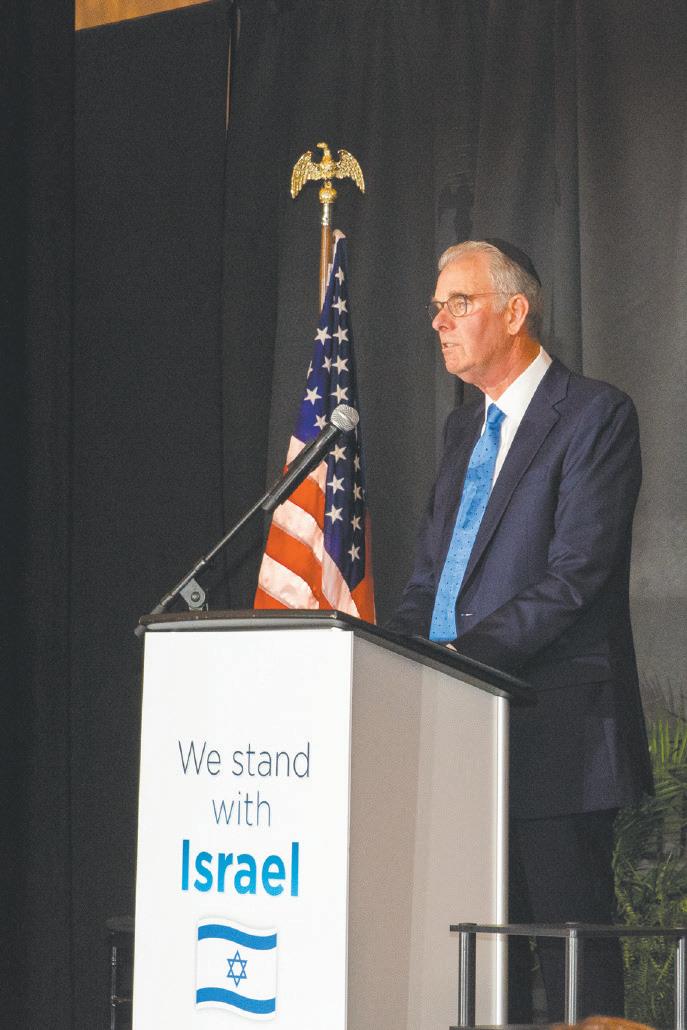









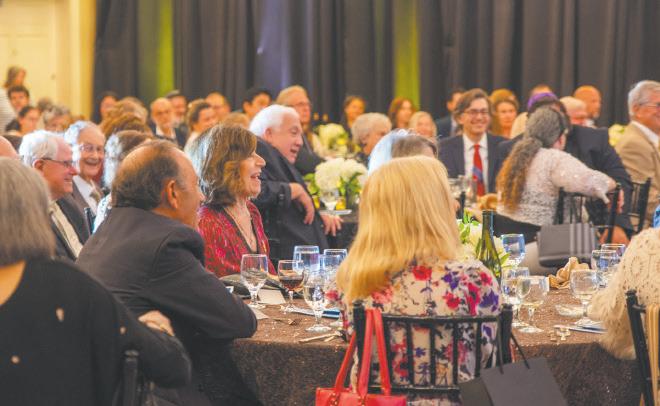



PRESIDENTS DINNER 2024






Thank you to our fantastic Presidents Dinner chairs Bruce and Debbie Feldman and many thanks to our wonderful community for making this evening such a success.
















































































 By Jackie Hajdenberg, JTA
By Jackie Hajdenberg, JTA

















































































































 Candace R. Kwiatek
Candace R. Kwiatek
























































